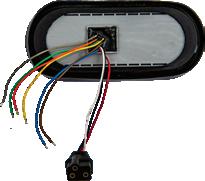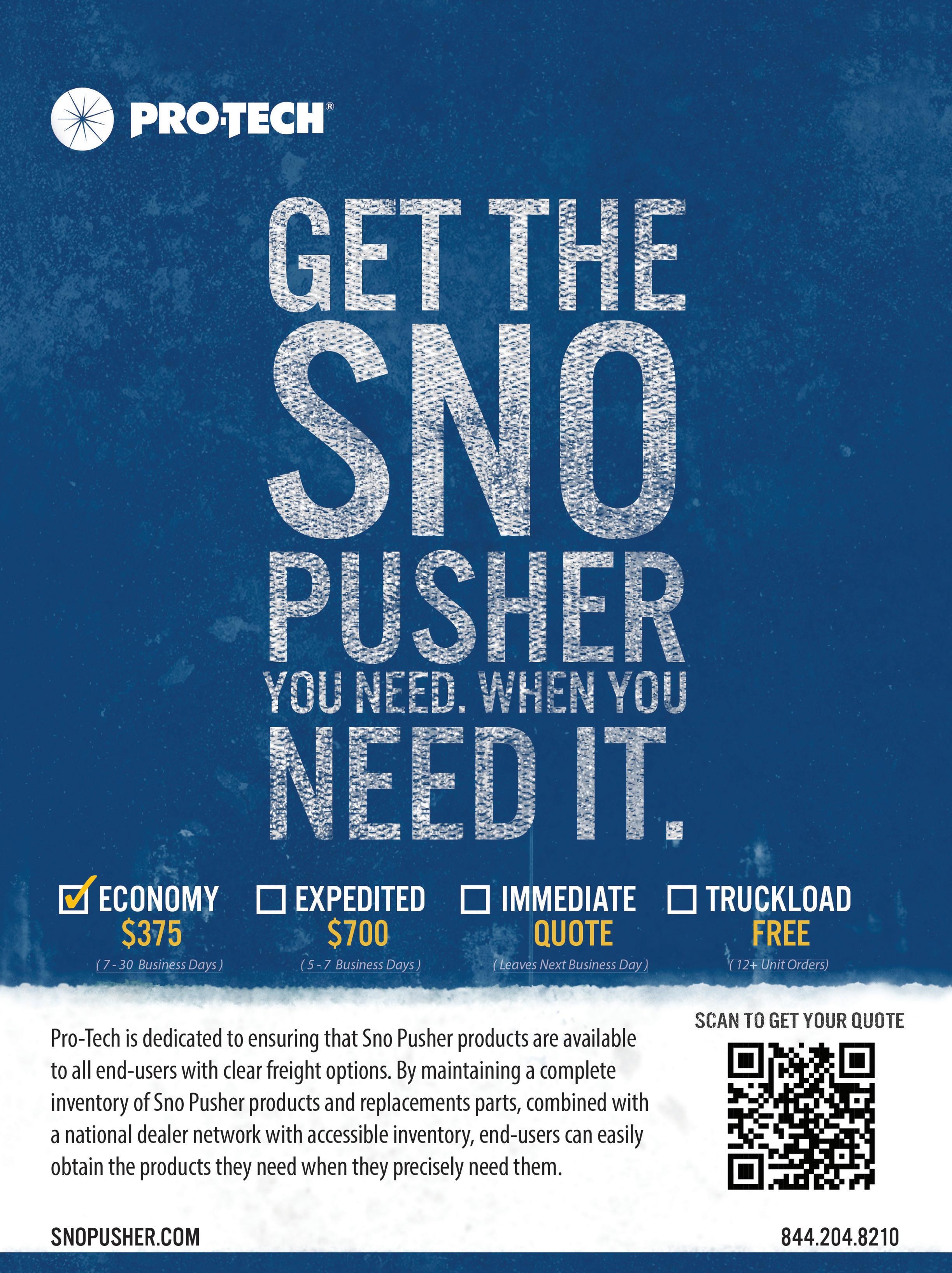


Connecting with like-minded people can provide a support network to help achieve personal and professional goals. Learn how four such groups are helping bring more awareness to and participation in key issues.
COVERAGE BEGINS ON PAGE 20







Connecting with like-minded people can provide a support network to help achieve personal and professional goals. Learn how four such groups are helping bring more awareness to and participation in key issues.
COVERAGE BEGINS ON PAGE 20



Mike McCarron
Patrick White
David Gallagher
Charmaine Allen
Advocates stress culture change, bringing diverse groups together to drive salt reduction efforts
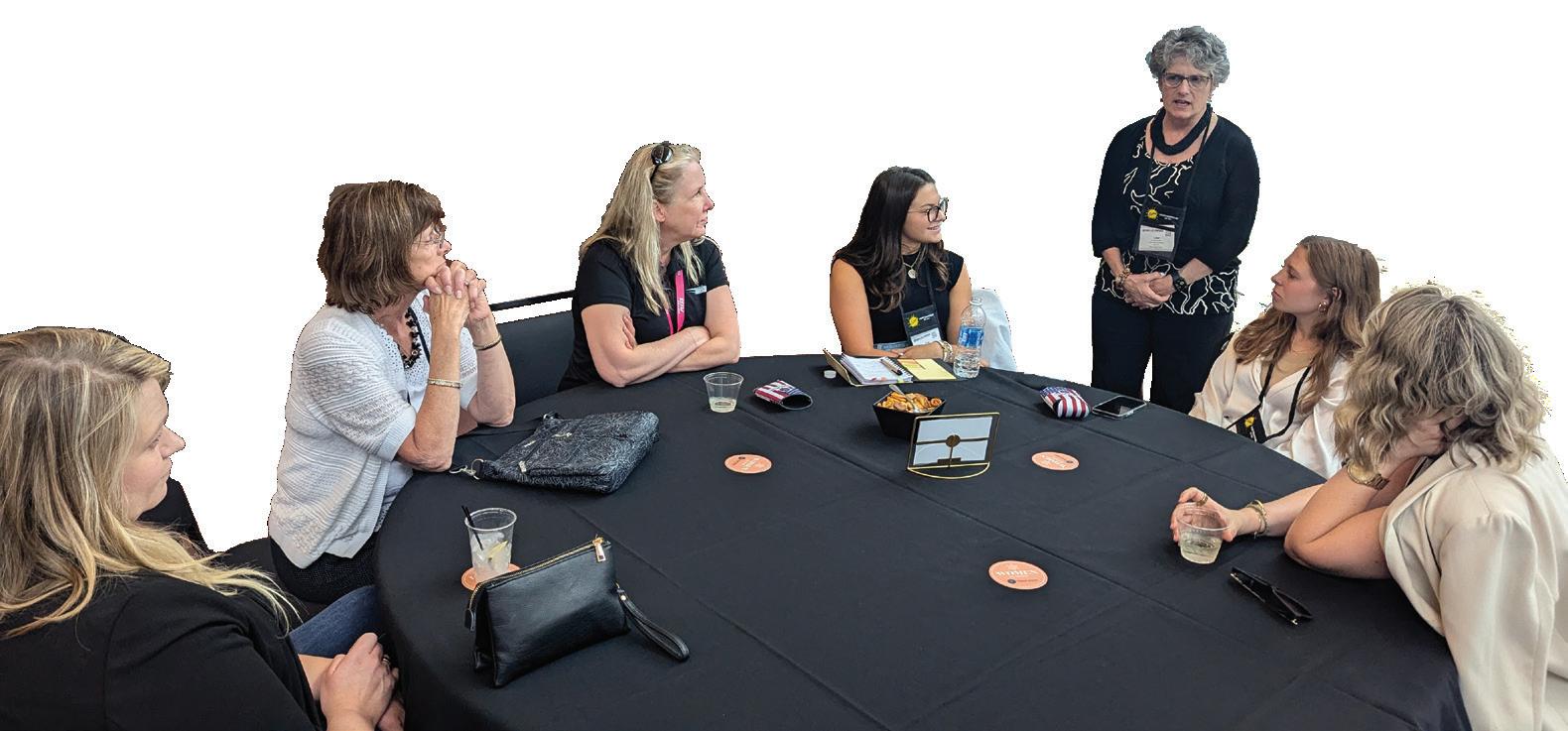
Jay Long


The Snow and Ice Workplace Report provides labor compensation data from snow and ice companies in the United States and Canada. The report allows you to compare your company to small, medium and large companies on key areas such as staff size, job roles, employee benefits and subcontractor utilization.
This report is free to SIMA members at sima-foundation.org/workplace.
Join us for a digital presentation on January 22, 2025. Register at sima-foundation.org/presentation.






Thank you to our sponsor:
















Jonathan Suffield, Owner/Operator—Suffield’s Snowplowing
Ashray Hanasoge, Property Manager—Ashray Property Services
Nicholas Higgins, Owner—Higgins Snow & Ice Management, LLC








Gold–Supplier
Caterpillar, Inc.
Douglas Dynamics
Silver–Supplier
Pro-Tech

Gold–Individual
Allin Rose Consulting
David Wescott, CSP
Frank Lombardo
Frankie Ippolito


Spiritus Business Advisors
Bronze–Supplier
TrucBrush
VSI by BOSS
Metal Pless

Jason Case, ASM, CSP
Jim Hornung Jr.,CSP
Mike Mason, CSP
Paul Vanderzon, ASM
Silver–Individual
Jeff Heller, CSP
Michael & Laurie Anderson
Charitable Fund, CSP

Robert A. Young










The association is in a healthy financial position that allows us to strategically invest our financial reserves in programs and services that will benefit our members and the industry at large.
As a kid growing up in the ’80s, I was a huge fan of Michael Jordan. His athleticism was amazing to watch, and he changed the way basketball is played. I’ve read many of the quotes and insights he’s provided over the years, so I was intrigued when I saw a poster of him at a recent meeting at a contractor’s office. The quote was about how it has been his failures that have led to his success. This is often not appreciated, as when we think about Jordan it’s always the videos of the game-winning shots he made, the trophies he won, and the celebrations with teammates and fans.

access to an almost limitless amount of information—what continues to separate SIMA is quality, trusted information based on best practices and emerging standards. We are looking at several key programs and products to update and make more userfriendly.

What caught my attention was the number of game-winning shots he missed, the total lost games, the failures that are often forgotten by fans. So, what does this have to do with investing in the future? It’s what’s learned from the past that makes you better prepared for the future.
With this, SIMA is making plans to invest significantly in the association’s ability to meet the growing and changing needs of snow and ice management companies and professionals.
With recent updates to our organizational outcomes, we have the framework to move forward. The association is in a healthy financial position that allows us to strategically invest our financial reserves in programs and services that will benefit our members and the industry at large. What are some areas of emphasis?
The methods and options to obtain education, training and resources are more diverse than ever. As consumers, we have
Coming in early 2025, we have invested in the development of an online snow and ice resource center that will be the digital home to much of our content (e.g., Snow Business articles, podcasts, videos, industry news, etc.). This web resource will increase our outreach of important information and training to drive people to SIMA for digital content and resources.
We are all passionate about the importance of our work in performing emergency services, and it’s important to foster networking and sharing to build our community and professionalism. We also need your participation and support in advocacy and public policy work, as we are at a time when critical issues that could help our industry are being discussed and possibly changed. Salt applicator training with liability protection, the ongoing storm rule, and shared standards between the US and Canada are some of the issues that are arising.
SIMA is going to create and measure the solutions we offer to snow and ice professionals. Like Jordan, we will celebrate the successes and learn from the mistakes as we continue on our journey of ongoing improvement. I’m excited to see what we can accomplish in 2025.
SIMA TOWN HALL. SIMA staff and members of the SIMA Board and SIMA Foundation shared updates on 2024 and key initiatives for 2025 during the Town Hall meeting in November. If you missed it, watch online at sima.org/webinars. As always, we welcome your feedback on how we can make the association work for you!
Introducing the
Versatile
Utilize

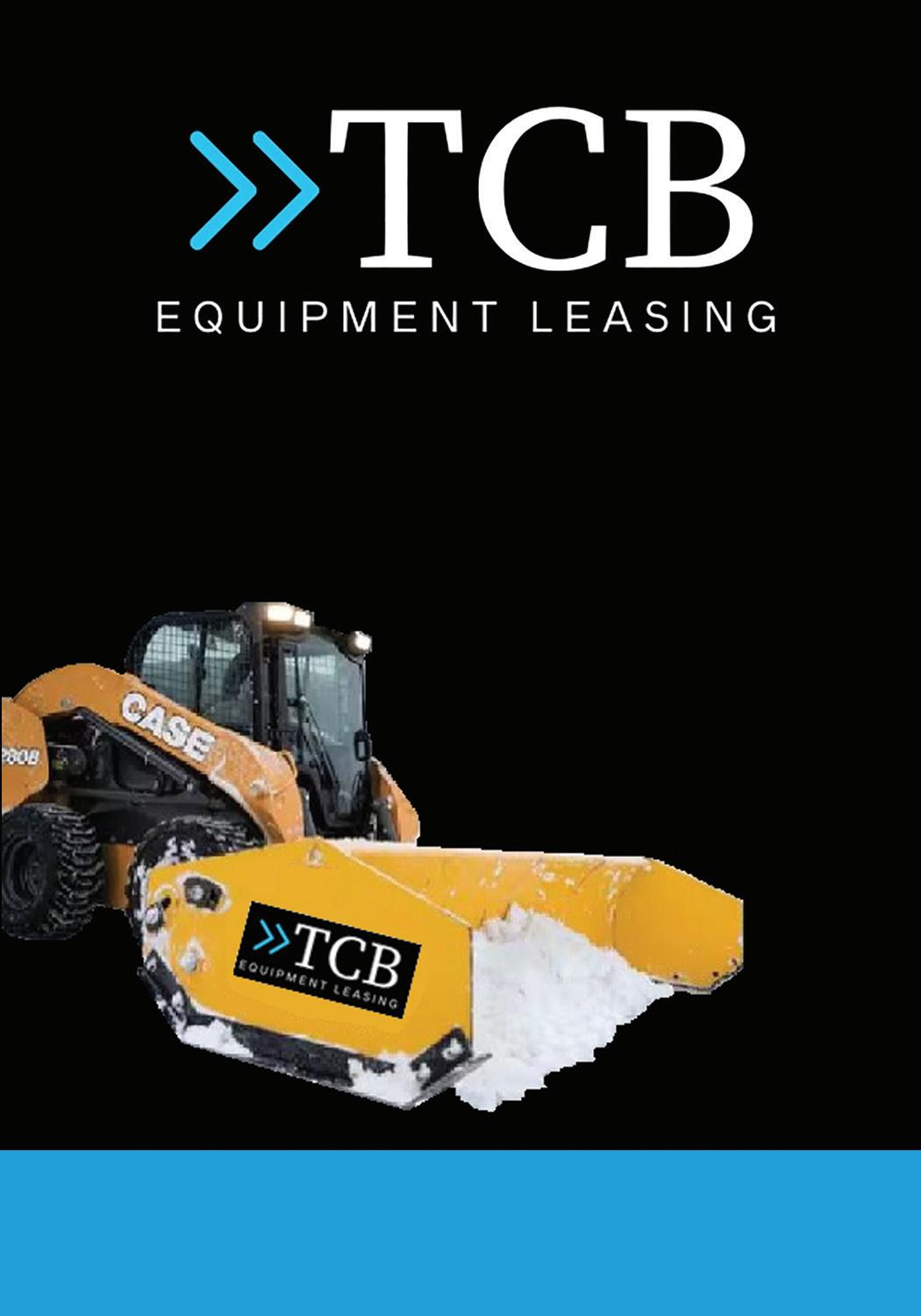
A Publication | www.sima.org
EDITORIAL
Education & Content Director
Cheryl Higley // 262-236-9972 // cheryl@sima.org
Design & Production
Lisa Lehman // 216-798-1853 // lisa@sima.org
ADVERTISING SALES & MANAGEMENT
Engagement & Development Senior Manager
Kerri Joseph // 614-557-3948 // kerri@sima.org
Supplier Services Manager
Aimee Krzywicki // aimee@sima.org
DIGITAL MEDIA & MARKETING
Marketing Senior Manager
Stephanie Orvis // 262-236-9948 // steph@sima.org
SUBSCRIPTION
Subscription changes/updates: https://www.sima.org/subscribe
EDITORIAL ADVISORY COMMITTEE
Charmaine Allen Allen Builders & Landscape
Nichole Ashton, CSP North Country Snow and Ice Management
Jim Hornung Jr., CSP Elbers Landscape Service
Rick Kier, CSP Forge Ahead Consulting and Software LLC
Bob Marks, CSP, ASM emi landscape
William Moore, CSP, ASM Executive Property Maintenance
Dean Outhouse, CSP, ASM Piscataqua Landscaping
Jason Ostrander, CSP East End Group
10140 N. Port Washington Road, Mequon, WI 53092 414-375-1940 // info@sima.org // www.sima.org
Chief Executive Officer
Martin Tirado, CAE // martin@sima.org
Finance & HR Director KC Hallgren // kc@sima.org
Events Director
Heather Carew, CAE // heather@sima.org
Membership Services Senior Manager Evan Newman // evan@sima.org
Membership Services Manager Amanda Pruss // amanda@sima.org
Thomas Skuta, CSP USM
Robert Young K.E.Y. Property Services
Michael Wagner, CSP, ASM Colorado DesignScapes Co.
Education Senior Manager
Ellen Lobello // ellen@sima.org
Brand & Design Manager
Gwen GaBree // gwen@sima.org
Office Manager / Executive Assistant
Nikki Luedtke // nikki@sima.org
Business Process Manager
Nakishia Lee // nakishia@sima.org
Accounts Receivable Specialist Amanda Peacock // apeacock@sima.org
SIMA OFFICERS & DIRECTORS
Board Chair: David Wescott, CSP, Transblue
Immediate Past Chair: Mark Arthofer, CSP, Skyline Construction
Vice Chair: Chris Hinton, CSP, GRM Inc.
Secretary / Treasurer: Jeff Heller, CSP, Innovative Maintenance Solutions
Ruben Diaz, ASM, Diaz Group LLC
Tom Fitzgerald, CSP, Outworx Group / Tovar Snow Professionals
Connie Gaul, ASM, Brightview Enterprise Solutions
Patrick Kane, CSP, Evercor Facility Management
Robert Miller Jr., CSP, ASM, RPM Landscape
Chris Thacker, CSP, Mr. Mow it All Corp.
John Janes, CSP, ASM, Caterpillar
Debora Babin Katz, TrucBrush Corporation
Snow Business (5730) (ISSN 2155-2576) Copyright © 2024 by the Snow & Ice Management Association, 10140 N. Port Washington Rd., Mequon, WI 53092 is produced and published February, April, June, August, September, October, December by the Snow & Ice Management Association. All Rights Reserved. No part of this publication may be reproduced or transmitted by any means without permission of the Publisher, SIMA – Snow & Ice Management Association. Subscribe at SIMA.org/subscribe. Periodicals postage prices is paid at Mequon, WI, and additional entry offices at 11716 S. Preston Hwy, Lebanon Junction, KY 40150-9998. POSTMASTER: Send address changes to SIMA - Snow Business – PO Box 8818, Lowell, MA 01853
With every pass, you clear the way. You work hard and fast and move snow—a lot of snow. You adapt, you change, and you keep fighting back against the elements over and over again. Just like we have been doing for more than 75 years.
The only expandable plow with a trip edge.

• Available in powder-coated and stainless steel
• 10' and 11' models available
• 31" tall moldboards with independently controlled flared wings

MBy EVAN NEWMAN
embership Manager Amanda Pruss and I have talked to a number of members and non-members this year, many of whom have shared their need for training and applicable resources that will aid them in their efforts to scale their business or prepare their team for the future.
I talk with prospective members almost daily who ask how SIMA can benefit them as a small or mid-sized company. The answer to that is easy. SIMA provides a number of options and resources that are better tailored to the small to mid-sized companies that invest in membership.
Many of SIMA’s large company
members have used these same tools to help scale their operations, to build up the people within their organizations, and to become the profitable and efficient snow professionals that they are today.
SIMA’s dedicated staff continues to innovate in order to provide resources to the industry:
1 Through our best practices and standards, benchmarking tools, or templates and customizable documents, we help you scale your business and elevate the industry.
2 If you are looking to improve operations or safety, we have a number of on-demand video-based resources in our training platform and downloadable checklists and teaching aids.
It’s already December, so if you haven’t checked out your mySIMA account recently, I encourage you to
do so to ensure you are prepared for the next storm.
Visit customer.sima.org to log in or email memberservices@sima.org for more information on how to get your account started and to begin utilizing our industry-leading best practices and resources.
Evan Newman is Senior Manager of Member Services for SIMA. Contact him at evan@sima.org.
veriFy your sima membership


SIMA’s Certified Snow Professional program is undergoing administrative changes that will impact CSPs beginning January 1, 2025:
Renewal cycles: Current CSPs will shift to a 2-year renewal period based on the date of their last CSP renewal payment.
Renewal fees: The renewal fee for the new two-year cycle will be $250, compared to the previous one-year cycle of $130
Continuing education credits: CSPs must complete 15 continuing education credits over the two years to remain in good standing. There are several ways to achieve CEs, including attending and/or speaking at a SIMA or other industry event; writing articles for Snow Business; serving on a SIMA
task force and more. For a full list of CE opportunities, visit sima.org/getcsp
Lifetime status: CSPs who have been in good standing for 15-plus years have the option to attain lifetime status for a onetime fee of $275. Lifetime CSPs are exempt from obtaining the required CE credits.
If you have any questions regarding the changes, please visit sima.org/getcsp or email Ellen Lobello at ellen@sima.org.

If you missed any of SIMA’s Winter Boot Camp activities Oct. 28-Nov. 1, check out sima.org/bootcamp to access recordings of the live sessions, on-demand videos and downloadable resources. We couldn’t offer this event without the support of our dedicated members who contributed their time, equipment and knowledge to the effort:
• Doug Freer, CSP, Blue Moose Snow
• Dean Outhouse, CSP, ASM, Piscataqua Landscaping & Tree Service
• Rob Wile, CSP, ASM, and Jeremy Darling, CSP, ASM, JC Grounds Management
• Mike McCarron and Angel Campos Chavez, Imageworks Landscaping
• Jenny Girard, ASM, The Integra Group
• Michael Wagner, CSP, ASM, Designscapes Colorado
• Matt Gerich, MBG Consulting
Special thanks to BOSS Snowplow for their sponsorship support!
Thank you to Kerri Joseph, Senior Manager Engagement and Business Development, who is celebrating her 5-year SIMA anniversary!

SIMA’s education team will be convening a task force of CSPs in 2025 to undertake a review of the existing program and determine if changes or additions need to be made. If you are interested in participating, visit sima.org/volunteer and check the “join a task force” box. Meetings will begin in early 2025.
For those who are unable to attend an in-person event to achieve CEs, SIMA will host CSP Days online in April and October 2025. Attendees will be able to obtain 4 credits at each event toward their 2-year 15 CEU requirement. More information will be coming in early 2025

January 22, Noon EST
The SIMA Foundation will host a webinar to showcase data from this year’s Snow & Ice Workplace Report on January 22 at noon EST. If you haven’t had a chance to check out the report, it includes key data from snow companies on compensation, benefits, job roles and more— all key information as you begin planning for 2025-26. Members can access the white paper for free at sima-foundation.org. Non-members can receive the white paper and get a tax writeoff when they donate to the SIMA Foundation! The webinar is free but you need to RSVP for access. Visit sima-foundation.org to register!
Special thanks to LMN/Greenius for their sponsorship support!


BY MIKE McCARRON
Managing and handling client communication expectations during contract and emergency contract work is a critical aspect of maintaining a successful business relationship. Effective communication ensures that clients are well-informed, satisfied and confident in the services being provided. However, it’s essential
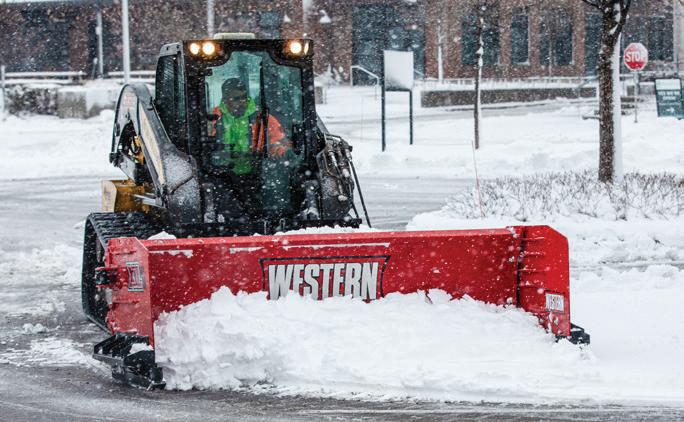
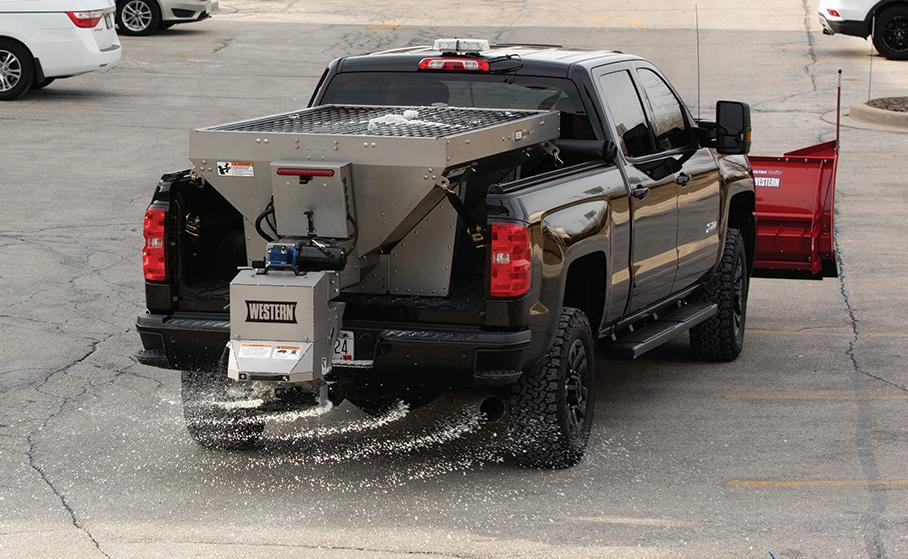

to strike the right balance between providing enough information and overwhelming the client. Here are my 10 strategies for handling client communication and managing expectations effectively:
1 Establish clear channels. At the beginning of any contract, it is important to establish clear communication channels. This includes deciding on the preferred methods of communication (e.g., email, phone calls, or video conferences) and setting response time expectations. Clear communication


Tackle winter head-on with Western Dealers. Aspen Equipment has teamed up with dealers throughout southern Minnesota and the Quad Cities to offer one of the largest networks in the Midwest for Western snow plows, salt spreaders, parts and product support networks.
channels help ensure that both parties are on the same page and can reach each other easily when needed.
2 Set expectations early. Setting expectations early in the contract is crucial. This includes discussing the scope of work, timelines, deliverables and any challenges that may arise. By setting clear expectations from the start, clients will be less likely to be surprised by any changes or delays.
3 Provide updates and progress reports. Providing regular updates before it snows and progress reports during events is essential for keeping clients informed and engaged. These updates can be in the form of hourly or daily reports, status meetings, or email updates. Regular communication helps build trust and ensures that clients are aware of the progress being made on their project.
4 Be transparent and honest. Transparency and honesty are key components of effective communication. If there are any issues or delays, it is important to communicate these to the client as soon as possible. Being upfront about challenges and providing solutions or alternatives can help maintain the client’s trust and confidence in your services. Sending photos with job and/ or site progress reports helps eliminate doubt and concerns.
5 Take a tailored approach. Different clients may have different communication preferences and needs. Some clients may prefer detailed reports and frequent updates, while others may prefer highlevel summaries and less frequent communication. It is important to understand the client’s preferences and tailor your communication accordingly. If you are working with HOAs or condo associations, you will

likely need to send information to several people on the communication chain to control concerns.
6 Be clear and concise. When communicating with clients, it is important to use clear and concise language. Avoid using jargon or technical terms that the client may not understand. Instead, use simple and straightforward language to convey your message. This helps ensure that the client fully understands the information being provided. You may also need to refer to specific sections of the contract as a point of reference.
7 Provide actionable information. When communicating with clients, focus on providing actionable information. This includes outlining next steps, deadlines and any actions that the client needs to take. Providing actionable information helps keep the project on track and ensures that both parties are aware of their responsibilities. Most clients are concerned about completion times and site safety timelines, so start with these items.
8 Manage expectations during emergencies. During emergency contract work, it is especially important to manage client expectations carefully. This includes providing timely updates, outlining the steps being taken to address the issue, and setting realistic timelines for resolution. Clear and frequent communication is essential during emergencies to keep the client informed and reassured.
9 Avoid information overload. While it is important to keep clients informed, providing too much information can be overwhelming. Focus on providing the most relevant and important information and avoid overloading the client with unnecessary details. If the client requests more information, be prepared to provide it, but start with the essentials.
10 Seek feedback and adjust as needed. Regularly seek feedback from clients on the effectiveness of your communication. This can help identify any areas for improvement and ensure that the client’s needs are met. Be open
to adjusting your communication style and frequency based on the client's feedback. Some like photos and text details while others like text stats and not many photos.
Managing and handling client communication expectations requires a strategic approach. Each client will be very different, so getting this nailed
down right away will save you and your team a bunch of headaches.
Mike McCarron is president and founder of ImageWorks Landscape Management, a commercial landscape maintenance and snow removal firm in the Northern Virginia market. He has 20+ years of industry experience. Email him at mike@imageworkslandscaping.com.
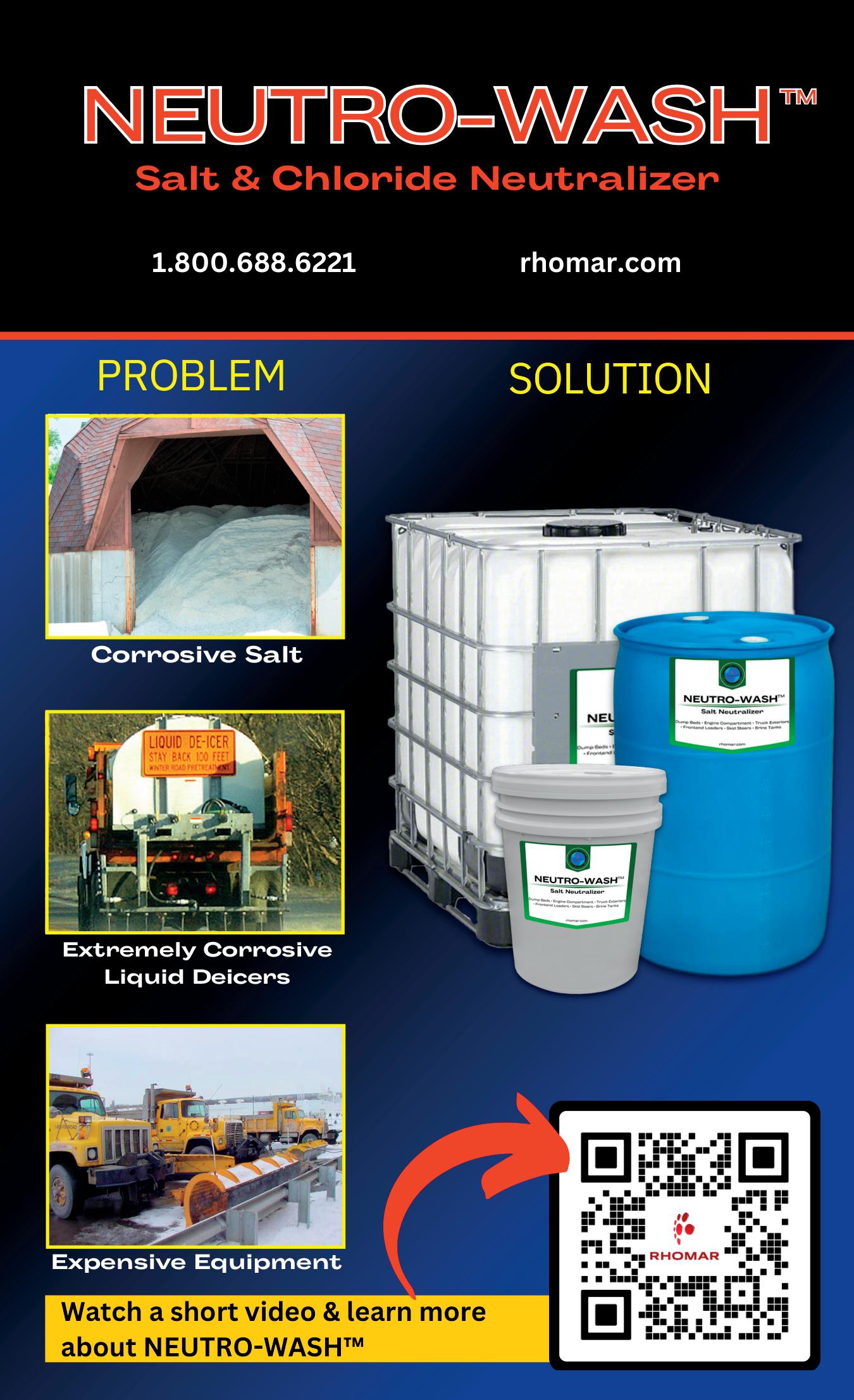

By DAVID GALLAGHER
In today’s business world, having a cohesive technology strategy and high-performance business operating software isn’t just a luxury, it’s an absolute requirement. However, software by itself is not a solution; it’s a piece of the overall puzzle. Software is designed to speed up the performance of tasks, but in the absence of proper processes and workflows, that can mean speeding up making errors instead of achieving proper outcomes.
When I work with clients on implementing business operating software, I always start with the introduction of core standard operating procedures and standard role definitions that align with the steps of each process. This ensures that we are automating the proper steps in the proper order so that proper outcomes are the result:
1 A functional system starts with an estimate that represents the total proposed scope of work, a production cost estimate, and a customer price.
2 The proposal becomes the accepted job with equal cost and price values.
3 Actual costs are then captured from the field by operations management teams and added alongside the estimate.
4 Once complete, the invoice(s) should be equal to the sold value of the original estimate or an amended value through a change process.
This approach provides for a consistent, conscious stream of data that can be accurately compared and evaluated when making management decisions about the work and the business overall.
RELATED STORY: Tips for selecting software vendor partners. Page 40.

1 A complete connection of the information from the estimate all the way to the invoice
2 The ability to capture and report actual job costs
3 The ability to compare estimated and actual costs
4 The ability to provide visibility to data of this type across your team
Processes outlining which roles are responsible for providing, reviewing, approving and/or adjusting inputs and outputs are essential to ensuring data consistency and the system outputs. The estimating process might involve more than one person, depending on the size or scope of the job:
• The sales professional may gather scope information and take-off data.
• An operations manager or estimator may review the site and system-calculated time and materials to produce the work for possible edits based on considerations on the site.
• A branch or general manager may review the final estimate and pricing for approval with both the sales professional and the operations team. This process is typically executed partly in the system and alongside it.
When it comes to the reporting
function of the software, it is important to ensure there is enough flexibility to report key metrics to your business approach, and that they align with the role and process definition. Reporting all kinds of data can feel important, but if that data cannot be understood by the people in your business in a way that can inform their decisions and actions, it is worthless.
I suggest no more than five key performance indicator metrics per role in your business, to be determined through a collective review and discussion with the entire team. Each role’s KPIs should be tied to outcomes in the business’s KPIs.
Regardless of the software you choose, don’t overlook the importance of standard defined roles, processes, and KPIs per role before implementation. This approach will set you and your team up for success with your new system and ensure you are not simply making mistakes faster!
David Gallagher is principal for Spiritus Business Advisors. He has over 25 years of experience as a senior service-oriented leader on all aspects of property service. Contact him at david@ spiritusba.com.

Get data. Gain efficiency. Save on costs. Dive into the benefits of Liquid Deicing.


01 REDUCE THE AMOUNT OF SALT USED.
Using liquid salt brine can reduce the amount of salt needed by up to 70% on post-treatment and up to 35% on pre-treatment.

02 SKIP THE PHASE CHANGE.
Liquids go to work immediately upon application while granular deicers must react with snow and ice to create surface brine.

03 MINIMIZE INFRASTRUCTURE DAMAGE.
One ton of rock salt can cause between $800-$3,000 in long-term infrastructure damage. Liquids use up to 70% less chloride material.

04 USE HIGH-QUALITY BRINE ADDITIVES.
Reduce the corrosiveness of applications by up to 80% with liquids.

05 GET PRECISE AND CONSISTENT APPLICATION.
Use GPS rate control to take the guesswork out of application and apply the correct amount every time.
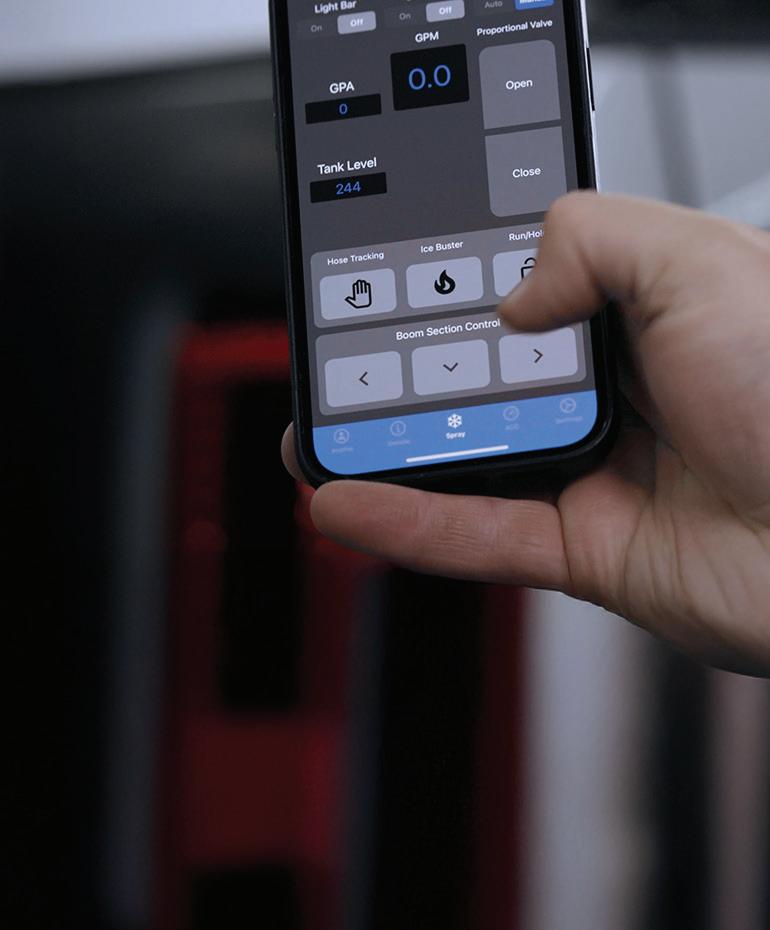
07 ENJOY WIRELESS BLUETOOTH CONTROL.
Command your entire spray system, including the engine, from a smartphone or tablet — with no wires or installation.
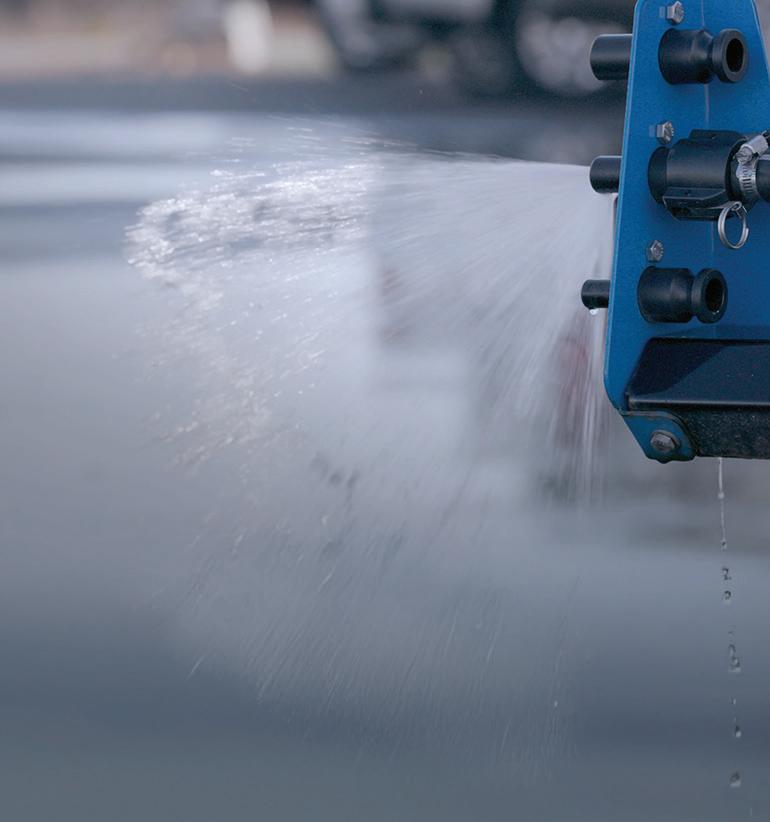

06 CAPTURE YOUR JOB TRACKING DATA.
Save on costs with in-app job tracking that provides accurate data for billing, costing and reporting by site, snow event and season.

08 REDUCE CHLORIDE POLLUTION.
By using less material, you reduce the amount of chlorides that wind up in lakes, rivers, ponds and drinking water.

09 CONTROL VARIABLES.
The Legacy Brine Maker and the Genesis Brine Buddy both use a Bluetooth Salinity Reader that broadcasts salinity to your smartphone or tablet.

10 DELIVER ON PRE- AND POST-TREATMENT.
Execute correct coverage to reach all pores in a surface with pre-treatment application of 40-50 gallons per acre. Use post-treatment applications instead of rock salt at a rate of 80-100 gallons per acre.

There are many reasons why snow and ice contractors are making the switch to liquid deicing, but it they can be summed up in one word — SAVINGS.
• Liquid deicing helps you SAVE on salt by using up to 70% less on post-treatment and up to 35% less on pre-treatment.
• Liquid deicing helps you SAVE on time by skipping the phase change because liquids go to work immediately upon application.
• Liquid deicing helps you SAVE on labor costs with greater efficiency and job tracking that provides accurate data for job billing, costing and reporting.
Scan the QR code to ELEVATE YOUR LIQUID IQ and discover the tools and science behind liquid deicing, plus how you can incorporate it into your fleet for a positive impact on your business.
















































Small businesses can’t afford not to make the investment

BY CHARMAINE ALLEN
We are a smaller business where all our pennies count. We have been blessed with a truly diverse business, with both residential and commercial customers and service offerings that include carpentry, commercial repairs, landscaping, and snow services.
Because of the array of services we provide, it was difficult to find an allin-one technology solution. Instead, I would just think, “I can make a spreadsheet for that. Why would I pay for CRM, payroll or scheduling software when I can manage these tasks on my own?” But technology has allowed us to streamline and simplify tasks and duties, making us more effective and efficient.
1 Documentation. We have used a product called Company Cam for years—it’s affordable and gives everyone in the business access to job notes, photos and documents. This technology automates many basic daily tasks that would otherwise eat up minutes—which turn into hours, days and weeks—and leave you wondering what you have completed or where you left off.
2 Communication. If you want to communicate with your client, or if employees need to communicate with one another, there are a variety of online chatting services. We use Slack, which is free, for employee communication; and we have a Google Voice number, which is only a very small investment, that we use to communicate with clients. Both solutions are easily accessed through our desktops or cell phones, and Google Voice lets customers feel confident they can reach us without us having to give out our actual cell number.

3 Data storage. Technology helps businesses to safely store and access information, which can eliminate the need to double- or triple-enter details, thus reducing the amount of paperwork and improving efficiency. Storing customer information and contracts in a virtual data warehouse means that this type of information can be accessed in seconds.
Technologies are helping businesses reach their target markets in new and innovative ways. To remain competitive, businesses need to stay ahead of the curve in a world where technology constantly evolves and changes.
However, in addition to the positive impacts, tech can have negative effects. For example, as technology becomes more accessible, it is easier to become distracted. Establish company policies to prevent employees from misusing technology, and to boost job satisfaction and productivity by helping them develop good technology habits. There are also outside threats like hackers, etc., so cybersecurity must be considered when a business relies on technology. (See page 32 for a story on cyber insurance).
Tech as an investment
Think of technology the same way you do equipment. While there is a cost to investing in these items, you’re investing in your business and employees. We have had a trying time getting or keeping superior quality people. By investing in, for example, a skid steer or loader, you can increase production while also needing fewer employees. We have also invested in closed-cab equipment, with heat and air conditioning so operators are more comfortable in all kinds of weather and environments. So do your research to determine what equipment and technology will make your business more efficient and help your employees to perform their best.
These investments, while they can sometimes represent a scary financial commitment, have paid us back tenfold and allowed us to progress and grow from year to year.
Charmaine Haggerty-Allen is co-owner and chief financial officer for Allen Builders and Landscape in Hamlin, PA.
Email her at
charmaine@allenbuilderslandscape.com








By DANNY KERR
You can’t outwork a dysfunctional business. If you’re overwhelmed by constant staff questions, demanding customers and razor-thin margins, this article will show you how to reclaim control.
You’ve been running your snow removal business for a while now, and while you’re always busy, it feels like you’re focusing on the wrong tasks. Between tracking down project updates, double-checking invoices, and helping your team with estimates, you’re worn out. No matter how often you explain things, your team still comes to you for answers—or, worse, they skip asking altogether and handle things their own way.
It sounds like you need some standard operating procedures. Hang on! Before you nod off, hear us out. You can’t field every question, handle every detail, or put out every fire. You need to concentrate on more important things, like your company’s vision.
Dont’s
As you embark on your SOP journey, here are some points worth keeping in mind.

You need to extricate yourself from the day-to-day craziness. In this article, we’ll show you how standard operating procedures (SOPs–or SnOPs, mind the pun) can enhance your business and improve your life.
Still not convinced that SOPs can make a substantial impact on your business operations? How many of the following scenarios feel familiar?
• Your estimating process is inefficient, and your team reinvents the wheel with each estimate.
• Getting bids out the door drains way too much energy.
• If you can even find the labor you need, you don’t have time to train new employees.
Create an SOP Index. This is a master list of all the SOPs you expect you’ll need. Add to it as you encounter other processes.
Have someone test the SOP. When the same person who carries out a process is the one writing it, they can forget steps that have become implicit or intuitive for them.
Trust your team. Once SOPs are ingrained in your business, your staff will build on them as they go.
Have newbies take a breath. Give new people a month to settle in and learn the ropes before they start drafting (or changing!) your SOPs.
• Scheduling is a nightmare— you’re constantly herding sheep.
• Your sales team’s execution could best be described as “varied.”
• You have a few systems for your operations; it’s just that you’re the only one who knows them.
Dealing with menial administrative demands and getting bogged down
Don’t overcomplicate it. You don’t need a 10-page SOP when a one-pager will do. It’s a procedure, not “War & Peace.”
Don’t outsource it. It can be tempting to just bring someone in to bash these out, but you’ll have better buy-in if you keep the process in-house.
Don’t let perfect be the enemy of good. SOPs don’t need to be pristine right out of the gate. They can evolve. And they should.
Don’t make updates an annual event. Avoid updating your SOPs only once a year. It should be ongoing, with people doing it for their benefit.
in day-to-day operations takes you away from more important matters: strategy, culture, landing clients—you know, the big stuff! Without SOPs, quality inevitably suffers, and it becomes nearly impossible to scale a business.
SOP basics
Ready to chill the chaos? Let’s start at
The simple tasks that people do infrequently, can be tricky to remember and annoying to explain over and over again.
Think: How to mix snowblower fuel, brew a pot of coffee or ship a box.
the top. What exactly is a standard operating procedure? For a solid definition of these under-appreciated little suckers, we turn to Tom Hughes, GembaDocs co-founder and author of “Improvement Starts With I.” He explains that:
“An SOP is a clearly documented, understood, and agreed-upon way of carrying out a task.” Basically,
These are everyday tasks you really don’t want to mess up because they’re important to the functioning of the business.
Think: The process for assembling a product, raising an invoice or closing a deal.
it’s how stuff gets done. But there are a few key elements in Hughes’ definition that are worth digging into. A good SOP should be: Documented. It’s important to share the wealth…of knowledge. Every SOP has a purpose—make sure it’s not a secret. Get your processes out of everyone’s heads and into a centralized place, whether
that’s onto paper, a Google doc, a flow chart, even an iPhone video.
Understood. The SOP needs to be done in a way that’s easy for everyone to understand.
Agreed upon. The process can’t be a pie-in-the-sky idea of how something should be done or a single person’s way of doing things. Everyone needs to be aligned with the method that is chosen.
Whether you realize it or not, you’re probably already running your business with some SOPs.
• Do you have and use any checklists? Those are basically SOPs. Boom. Yup, that counts.
• Repeating yourself (...again… and again…)? Those topics are good candidates for an SOP. Boom. Another head start.
• Next time you’re explaining something to someone, have them take
Continued on page 16

2-way online tracking and control system, standard
• Automatic pre-treat and post-treat
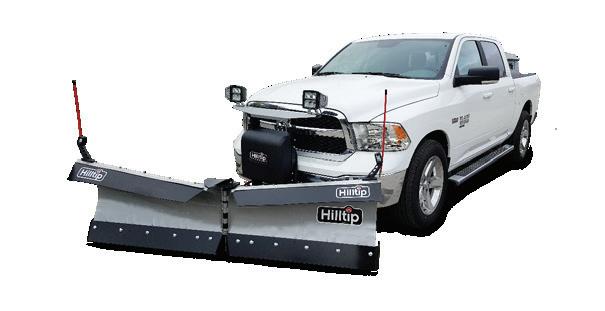
V-plows and straight blade plows for 1/2 ton pickups, UTVs and tractors.



1.2-8.0

4.5-10 cu ft electric 12V tailgate spreader operated wirelessly with Hilltip StrikeSmart™ control App

Continued from page 15
notes. Boom. Another SOP is drafted. See? You have them…you just need to write them down.
Need some more ideas on where to begin? Find a mirror. If you want to start dumping expertise onto the page, the best place to begin is with yourself. Start with the stuff that annoys you the most and prioritize the things you just don’t want to do anymore. What causes you headaches? Those are great SOP candidates. Consider things like:
• Scripts for what to do when field staff arrive on site
• How to close a sales call
• How to put together a winning estimate
• Quality control inspections that ensure nothing gets missed
• Safety protocols for specific sites
• End of project close and review capture
If everything’s in your head, you become the biggest bottleneck; so download your processes first. SOPs keep the tires turning, even when you’re no longer behind the wheel.
Plus, if your future plans for your company involve selling it, one of the first items potential buyers will look for is whether you have SOPs in place and


The first winter tire for tractors, Nokian Hakkapeliitta TRI , makes sure your winter contracting has all the grip and control you need –with or without studs.



whether they’re being followed. Wellentrenched operating procedures mean that the company can continue running smoothly without you, which is the most essential element when you sell.
The zen of SOPs
The frenzy of being a grass-roots entrepreneur can be exciting, but you’ll need to calm that down if you want to become an enterprise-level business owner who’s not constantly bombarded by demands from every direction at all hours.
We get that SOPs are boring. But embrace the boring. Boring means satisfied customers, stronger profits and less stress. There’s bliss in the bland. Maybe we should rename them Soothing Operating Procedures.
Danny Kerr is a founder of The Breakthrough Academy, created to help you evolve from a doer of all things to a builder of smart systems and a leader of great people. Learn more at btacademy.com.
The first winter tire for wheel loaders, Hakkapeliitta Loader, offers you speed, stamina and control. Unmatched grip and durability in the market –both winter and summer.








Whatever 2025 holds, we’ll embrace the challenges as opportunities because that’s what they are: chances for us and our team to learn and grow together.
Has the first snow fallen in your area yet? To make it to print, I’m writing this column ahead of when you’ll read it. Hopefully we’ve had a couple of snow events or at least some salting routes by now.
In Ohio, we don’t get nearly the amount of snow that some of you do, which means that our team needs to be prepared for snow and ice, but we also need to be prepared in case there isn’t much. Our goal is to keep our entire team employed and offer them as many hours as we can during the winter. We don’t want to have an off-season, and there are several things we do to ensure we stay busy. To make that happen, we’re doing:
Snow and ice management, obviously Snow and ice is a major revenue driver for us in the winter, and performing this work for our clients brings in money and hours for our team members. When we have snow, we’re efficient about taking care of our clients’ properties. Our efficiency comes in large part from preparations ahead of time: communicating with clients to make sure everything is ready to go; training team members on any new-to-them equipment; and doing practice runs of routes.

Throughout the year we look for jobs that we could do in the wintertime. Things like retaining walls, dormant pruning, tree work, and other kinds of hardscaping are jobs our sales team is trained to propose and then save for colder months. Even if we work a little slower because of the cold, or even have to tent an area, it’s keeping our crews busy and generating billable hours. To make this happen, our teams need to be working to fill our schedule year-round by selling snow removal services and winter work projects, while still filling up our normal landscaping schedules.
We’ll spend some days working around our
shop. In 2024 and 2025, we’re working to get our Cincinnati branch open. We’ll have team members doing work around the facility on projects we’ve saved for days when the weather prevents us from working outside. This also includes any equipment maintenance or deep cleaning.
In addition, we use this time of year to invest even further into our team’s skills by attending industry events, offering CPR training, or working with team members to help them earn certifications. Again, the key to this is being organized and prepared. We track our equipment, so we know what needs serviced; we know our training and certification priorities; and we reiterate our goals so the team understands what a wintertime win looks like.
Some of our marketing tactics require hand-to-hand effort. We have weeks earmarked for our crew to help with door hangers in neighborhoods where we want to build up landscape maintenance route density. We’ll do this on days when the teams can’t be out landscaping or doing snow removal, so that we’re being productive and still getting our team the hours they want to work.
Our goal is to use the winter months to set our year up for success, and we know that we can’t reliably count on any one solution. It’s possible we’ll have a great year for snow; it’s also possible it’ll be a lighter season. As we look at all the possibilities when making our plans, we try to understand the best-case, mostlikely-case and worst-case scenarios. Then we plan so our teams are ready to tackle whatever comes next.
Whatever 2025 holds, we’ll embrace the challenges as opportunities because that’s what they are: chances for us and our team to learn and grow together. I’m excited about all that the new year will hold, and I hope that you are too. Happy holidays and Happy New Year!
As winter progresses, it’s important to keep an eye on the details that can get lost when operations are in full swing.
In the lead-up to any snow season, a ton of communication is happening. Don’t go dark once the season begins.
Communicating with clients after every storm and asking them to rate your performance will ensure against the need for major midseason course corrections.
A disgruntled client is often the result of a lack of communication. It’s understandable that you wouldn’t want to interact with clients during the intensity of the snow event; but nothing is more
STEP 1 Determine what you want to improve, learn or a problem you wish to solve. Perhaps you have multiple items on your list. However many you have, get started and keep focused on your plan.
STEP 2 Craft questions that will give you information and insights. Once you’ve identified the improvement or problem area, create a number of questions in which answers will provide you with information and insights on the issue(s). Tailor your survey to maximize responses from those who will receive it.
STEP 3 Choose a survey generator to help with sending and responding (e.g., SurveyMonkey, Google Forms). These types of programs enable simple response collection and reporting on the results. You can also build survey templates that you can use as a base to create feedback surveys in the future.
valuable than the feedback you receive from clients afterward. A customer feedback program can be as simple as administering a survey twice a year, or as in-depth as personal interviews. For most, using an electronic survey with up to 20 questions a few times a year can generate enough data and insight from which to implement positive changes.
STEP 4 Send the survey. Make sure to test your survey before sending so that there are no errors or omissions.
STEP 5 Review the survey findings and develop a game plan. Based on the data, feedback and insights received, you should be able to formulate an improvement plan. However, be aware that not all data and insights you receive will be concise, so plan on budgeting some time to reach out for more information.
STEP 6 Implement the required changes. Knowledge of what can be done to improve means little if you don’t take the time to make the changes. Although change is often difficult, without it, nothing happens.

Once you’re into the season, maintaining your equipment is key to being successful and efficient.
Crews should be trained to report issues with equipment during and after each event. Priority should be given to these items as time allows between storms.
If you have offsite equipment, it’s a good idea to have a manager or your mechanic check those pieces. Make sure that there are no blades with uneven wear, pinched hydraulic hoses, leaking fluids, or damaged moldboards or trip springs. It’s also important to fire up those machines and move them around to get a good evaluation. This aids in keeping the machines from sitting too long when you’re in between storms.

For equipment that comes back to the shop, it’s much easier to get a visual check but it’s still wise to move the plows, salters, sprayers, blowers, etc., to make sure they’re in good operating condition. Washing your equipment and using a salt neutral-
izer is also a massive help in keeping your equipment in top shape. As a snow professional, you understand the importance of quality products and equipment. You also know that downed equipment or lack of product in the middle of a snow event means loss of work and money. It is essential in the downtime to make sure all fittings are secure and that everything’s properly greased and fully operational. It’s always easier to fix plows and spreaders in the calm of the daytime when it’s not snowing.
You probably spent time during the preseason preparing routes for your team. But it’s important to constantly evaluate them. Do you have the right equipment and team members on each route? Do your routes need to be

Check with your accounts receivable team to ensure that invoicing is up to date.
Failing to invoice customers in a timely and efficient manner can create cash flow problems. You should also identify any customers who are late on or
haven’t made payment and reach out. Don’t wait until the end of the season. If the customer does not return phone calls and ignores emails and invoices, it may be necessary to cease service delivery and initiate the collections process.


Conducting site visits and hazard analyses are a must in the preseason; but midseason is a great time to get a fresh perspective, especially in the calm of a post-event visit.
Maybe trees are hanging over a parking lot or sidewalk, which interferes with a crew during an
event. Take special note of possible areas where snow pile melting and potential refreeze could occur, keeping in mind that most slip and falls happen in the days following the actual event. Additionally, report back to your team any serious issues that might have occurred on site — especially any damage that might need to be reported to the client. It’s a good idea to create a
post-event checklist so that anyone performing the inspection can easily engage in the process.
SIMA has a variety of courses and downloadable resources. Check them out at my.sima.org
Visit www.sima.org/startup for Snow Start Up resources.
Working in snow and ice management can take its toll on your team—whether it’s battling storm after storm, or worrying when the snow doesn’t fall at all.
Working in snow and ice management can take its toll on your team—whether it’s battling storm after storm, or worrying when the snow doesn’t fall at all.
Constantly polling your team and asking them how they’re doing throughout the winter will give you an insider’s view of their mental and physical capacities. It’s wise to also invest time
Constantly polling your team and asking them how they’re doing throughout the winter will give you an insider’s view of their mental and physical capacities.
It’s wise to also invest time
on in-season training. Rather than taking the time to reiterate proper snow removal principles and address staff after every storm, many owners will wait until spring to address key in-season problems. The best time to course correct, or to celebrate quality workmanship, is right after a storm. You will never regret planning post-storm debriefs after every event, giving your team a chance to tackle performance related issues early and often.
on in-season training. Rather than taking the time to reiterate proper snow removal principles and address staff after every storm, many owners will wait until spring to address key in-season problems. The best time to course correct, or to celebrate quality workmanship, is right after a storm. You will never regret planning post-storm debriefs after every event, giving your team a chance to tackle performance related issues early and often.
There is significant value in a formal, consistent debrief process. The U.S. military uses a formal debrief for every mission to learn from each success and mistake. The process helps perpetuate knowledge sharing across teams and team members and can be invaluable for future planning.
There is significant value in a formal, consistent debrief process. The U.S. military uses a formal debrief for every mission to learn from each success and mistake. The process helps perpetuate knowledge sharing across teams and team members and can be invaluable for future planning.
1
Timely and consistently scheduled. Make sure to put the debrief on the calendar for a convenient time as close to event operations wrapping up as possible. This ensures that everyone can prepare effectively and remember clearly during the review. Do it every time regardless of the circumstances of the event—there is always something to learn. In the case of year end, make it an event, celebrating success and reviewing improvements for next year.
Timely and consistently scheduled. Make sure to put the debrief on the calendar for a convenient time as close to event operations wrapping up as possible. This ensures that everyone can prepare effectively and remember clearly during the review. Do it every time regardless of the circumstances of the event—there is always something to learn. In the case of year end, make it an event, celebrating success and reviewing improvements for next year.

As an owner or manager, you can probably list the benefits of documentation quicker than you can snap a picture of a salted parking lot; but can your team do the same? Take the valuable time to constantly monitor your team’s use of your documentation strategy and course correct as soon as you can.
As an owner or manager, you can probably list the benefits of documentation quicker than you can snap a picture of a salted parking lot; but can your team do the same? Take the valuable time to constantly monitor your team’s use of your documentation strategy and course correct as soon as you can.
Involve everyone. Get as many people from all areas involved in the discussion as possible. Everyone has something to offer, and multiple brains in the discussion can pull apart a scenario more completely than one or two.
Involve everyone. Get as many people from all areas involved in the discussion as possible. Everyone has something to offer, and multiple brains in the discussion can pull apart a scenario more completely than one or two.
Have an agenda and lessons. This is partly “Meeting Rules 101,” but it is especially important in a debrief. It will keep you focused on the task of learning from the event so the meeting doesn’t just turn into a gripe session. Keep it simple but structured:
Have an agenda and lessons. This is partly “Meeting Rules 101,” but it is especially important in a debrief. It will keep you focused on the task of learning from the event so the meeting doesn’t just turn into a gripe session. Keep it simple but structured:
• What worked, what didn’t?
• What and who was missed?
• What worked, what didn’t?
• What and who was missed?
• How do we do better next time?
• How do we do better next time?
Make sure someone is responsible for taking good notes. Hold your operational planning, customer service and leadership teams accountable for reviewing the notes and amending the plan(s) going forward to avoid repeat issues and to ensure duplicated successes.
Make sure someone is responsible for taking good notes. Hold your operational planning, customer service and leadership teams accountable for reviewing the notes and amending the plan(s) going forward to avoid repeat issues and to ensure duplicated successes.

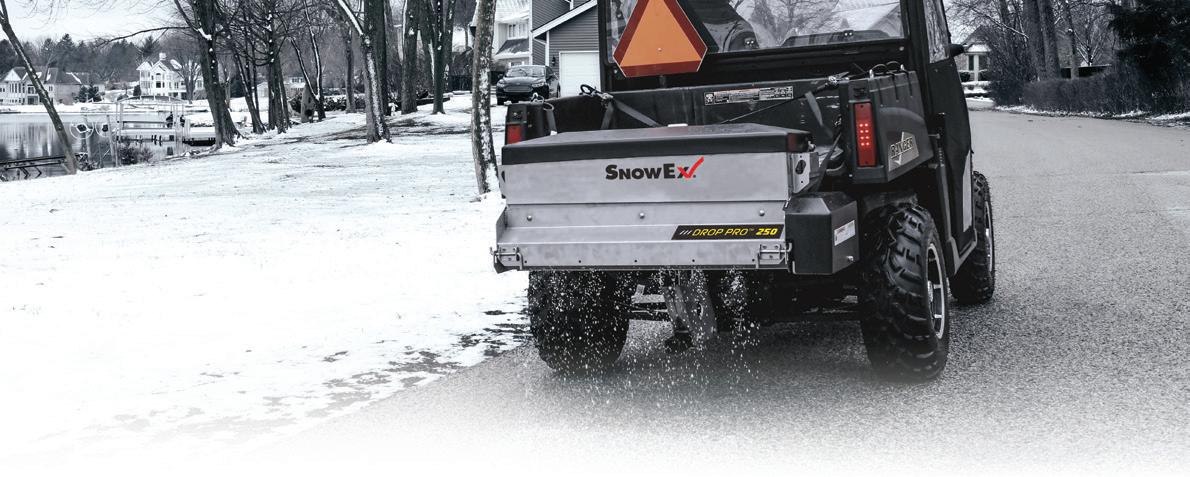

In this line of work, the weather can go from bad to ugly in no time. Be ready by anti-icing with liquid brine before the storm hits and use four times less salt.* The AccuSpray VSS-1000-1 liquid sprayer is designed to fit perfectly in the bed of your UTV with 100-gallon capacity. Gain the versatility you need to reach hard-to-access pathways, walkways, and sidewalks along with a spot spraying wand to easily stay ahead of winter ice on stairs and entryways.
*Salt savings based on salt salinity of 23.3% in brine


Attracting the next generation, elevating the value of trades is a group effort // BY
PATRICK WHITE
Steve Turner says that he was “the kind of kid who couldn’t sit still.” He wasn’t sure what he wanted to do, but given his difficulty keeping focused on academics, he knew college wouldn’t be a good fit for him. In a family with three older siblings who all went to college, Turner had to chart his own path.

Connecting with like-minded people can provide a support network to help achieve personal and professional goals. This section showcases four such groups that are helping bring more awareness to and participation in key issues.
Programs that help bring visibility and support to females in the snow industry gain traction
Two Leaders, One Passion / 26
From LinkedIn to a lifelong connection
Chloride Combat / 28
Advocates stress culture change, bringing diverse groups together to drive salt reduction efforts
“This was the 1980s, and our school had an automotive trade program, so I got into that,” he recalls. Upon graduating he got a job in a related field, doing auto and boat upholstery. But when the recession hit in the late 1980s, he and all the other employees in the shop were laid off. So at just 19 years old, Turner decided to open his own upholstery shop—one that he’s been running successfully in southern New Hampshire for 35 years.
For Turner’s first 15 years in business, he was a oneman operation. But in 2006 he began to hire employees. As more work came in, he expanded his workforce. But he also noticed it was becoming more and more difficult to find young workers interested in upholstery, or any other trade. “It was almost impossible. And I wasn’t alone. Every time somebody who worked in construction or plumbing came into my shop, we’d all be talking about the same thing: how can we get kids back into the trades?”
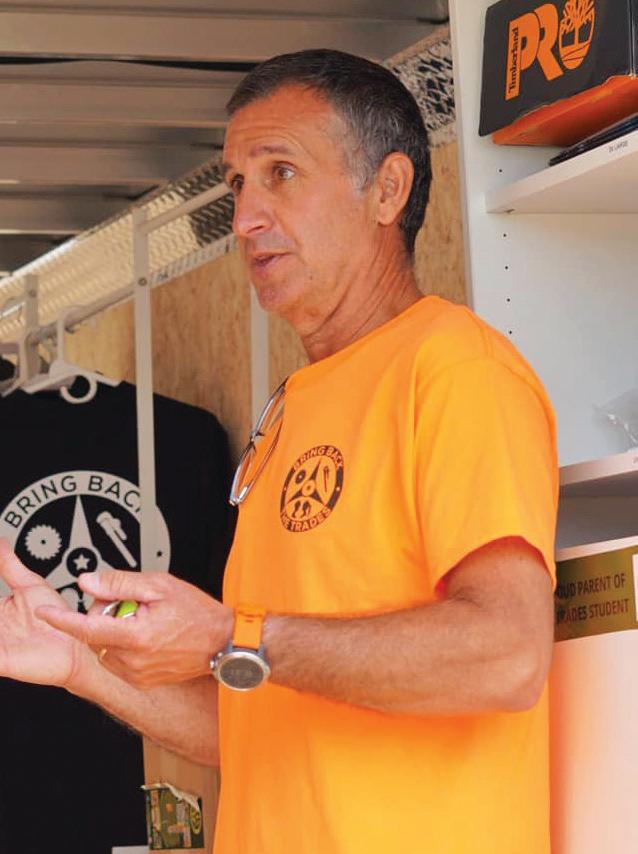
In 2017, Turner decided to take the first small step by spreading the message himself. He had a few hats made reading “Bring Back the Trades,” and would wear them at work. A friend who was a house builder saw it, loved the message, and asked if he could get similar hats with the same phrase and a saw and hammer on them. The next week, an electrician commented that he’d love to get some with an electrical logo on them. By the time a year passed, Turner had produced 47 versions of the hat for different trades and was selling them nationally. That’s when another friend saw the potential for not just a side hustle spreading a much-needed message, but a full-blown non-profit that would encourage young people to consider a career in the trades and funnel revenues into trade school scholarships.
“That’s how Bring Back the Trades became what it is. I can’t take credit for everything that was done—it was really a community grassroots effort,” says Turner.
That community has grown to include a number of business owners in all sorts of trades, including the green and
white industries. One early supporter of the effort was Turner’s friend and southern New Hampshire neighbor, Ben Holmes, CSP, who owns Rye Beach Landscaping. “When I heard Steve’s message, it just rang a bell with me immediately, that this was an area we needed to focus on,” recalls Holmes. “I think it’s great to show young people this option for a career—and it’s a necessity for the trades in general. Landscaping and snow is just one of the many trades that benefit from having young people delve into the various hands-on trades.”
Holmes went to college and earned a degree in horticulture, but he says that, for many, college today has become “such an expensive way to experiment with what you want to do with your life — and many times it really sets people back. So the concept of being able to go into a trade, to get paid to learn that trade, can be appealing.”
He emphasizes that the Bring Back the Trades mission means educating not only today’s job applicants, but also getting in front of very young people. “I'm talking to 12-year-olds. I'm talking to 15- and 16-year-olds, talking to their moms and dads,”
Holmes explains. “We have lots of conversations with people who are not necessarily employable right away because they're young, but it’s a way to reach them early.”
Across the border in Vermont, Russ Marsan, who co-owns landscape and snow services provider Carpenter & Costin, says that finding employees has been extremely difficult for him since Covid, and that the state’s declining population of young people makes the job even harder. When he heard about Bring Back the Trades, he immediately wanted to learn more.
“I’m friends with Mark Aquilino and Billy Butts at Outdoor Pride Landscape & Snow Management in Manchester, NH, and they told me about it, and how they feel the mission is critical to the future success of their business,” says Marsan. “I completely agree, and anybody that knows me knows I typically don’t stick my toe in the water—I usually just jump in and then I'll figure out how to swim from there. A week later, I was in Steve Turner’s upholstery shop talking about ways that he and I could collaborate.” Now, a large Bring Back the Trades event is being planned in
Continued on page 22

Continued from page 21
Vermont for the spring with a goal of building awareness, offering trade school scholarships, and connecting employers with young people considering a career in the trades.
Marsan says he’s had no problem getting support from other companies in his area that also are concerned about the future of the trades.
“It seems to be an easy conversation—it resonates well with people. They’re eager to talk about it, and eager to talk about it in terms of finding solutions.” He notes that it’s a topic that business owners will often complain about when they’re together, “but you can only do that for so long; at some point you have to just get after it, because complaining about it is not going to make it better,” he emphasizes, encouraging others to join the Bring Back the Trades community.

company in Pennsylvania and now operates Urture, a work apparel company, has seen firsthand the importance of promoting the trades. Urture is a sponsor of Bring Back the Trades, and also donates a percentage of its revenues to help fund trade schools through its “Patch Project” program. Companies that order branded employee apparel can specify which local trade program they’d like Urture to support.

Carpenter & Costin’s Russ Marsan (left) knew he wanted to be part of Steve Turner’s efforts to Bring Back the Trades. He’s hoping to spread the message in Vermont. Courtesy of Russ Marsan
For every purchase, the
Strauser says it’s been exciting to see companies be able to help support the trade programs that are producing the next generation of what he calls “green collar” employees. “And I think we’re right at that tipping point of now,” he notes. “Parents, children, students, educators are starting to talk about it. And I think the trades are being framed up as a good option for what we would traditionally call a successful career,” says Strauser.
work, I thought the shortage of people in the trades was a kid problem: kids just don't want to learn, or they don’t want to work,” he says. “But as I started really getting into it and talking to the people and going to the trade schools, I saw that the issue often has to do with parents saying to their kids, ‘You really should go to college, because you can’t make a good living in the trades.’” He says this is usually because of the nature of the trades in past generations: dirty, unsafe, low-paying, no room for advancement. Many trades today, he notes, are more characterized by technology, career growth, competitive salaries and retirement programs.
Zech Strauser, who founded a successful landscape and snow management
On November 15, Bring Back the Trades—backed by many supportive sponsors—held a huge event at the New Hampshire Technical Institute to promote the trades as a promising career path and give students exposure to more than 80 companies offering a wide array of career opportunities.
The event was headlined by Mike Rowe, who became well known for his TV show “Dirty Jobs,” and has since become a national spokesperson promoting careers in the trades. Bring Back the Trades handed out more than $50,000 in scholarships at the event. Similar events are now being planned in other states. To learn more about the organization, and to become a part of the effort, visit bringbackthetrades.org.
Turner says that this type of messaging around jobs in the trades is critical. “When I started doing this

“I’m not against college whatsoever,” Turner emphasizes. “I have one son, and he went to college and is doing really well. I created Bring Back the Trades specifically for kids who don’t want to choose the college path.” And he’s thrilled to report that progress is being made. “In the last two years, I’ve seen the pendulum swing; the message is really starting to grab hold, and the parents are starting to figure it out,” says Turner, who noted that Bring Back the Trades is also building mentor programs for these future tradespeople to look up to and get help from.
Holmes agrees that the trades are beginning to be seen in a different light: “Partially as a result of Steve’s efforts, the trades are less looked down on as a fallback now, and rather as a true career path where you can legitimately build wealth, and also have a guarantee of work.”
Patrick White has covered the landscape and snow and ice management industries for over 25 years. Contact him at pwhite@meadowridgemedia.com.

Programs that help bring visibility and support to females in the snow industry gain traction // BY CHERYL HIGLEY
Women working in and supporting the snow and ice management industry have long been a small and relatively quiet minority. But over the past few years, that has started to change. More and more women are succeeding in pivotal roles, both in the field and in management. SIMA and some of its members are helping to elevate the profile of these important industry contributors.
agronomy major; in work I was often the only female in the room or on the jobsite. I was never told no, but I was never encouraged either,” she says. “From that point, I wanted to create an atmosphere around me that would welcome women; to support women in the industry so they too can grow their career and support their family doing something they may love.”
Since starting, the group has discussed ethical leadership, recruiting and retention best practices, mental health
group starting to spread out, and I love that! They are asking each other for help on topics outside the group and coaching one another on how to handle situations. The value of the information and guidance that is being shared between members is inspiring.”
Burns Landscape and Snow Management Vice President Jillian Burns, CSP and Val Lesak recently embarked on a passion project to bring together women in the industry after being introduced by

Influential Encounters aims to create a strong and supportive community for women in male-dominated industries, to foster deep connections and create relationships, and to empower them for home and work.
“Women in snow” is a broad term, says Val Lesak. She formed the group with Jillian Burns, vice president of Burns Landscape and Snow Management. “It’s not just people like Jillian who are directly involved, but it’s also those who are in front-line positions, suppliers, and those who are in supporting roles like wives and partners.”
The group’s first dinner took place in early December; they’re hoping to plan 4-10 such events a year. Each event features a keynote speaker, and the gatherings are small to make the experience more intimate.
“The hope is people will find someone they have a good connection with and will continue to pursue the relationship,” Lesak says. “Influential Encounters is about making close connections. It can change the industry if we can do this right.”
Learn more at www.influentialencounters.com, contact Jillian at jillian@influentialencounters.com or Val at val@influentialencounters.com, or find Influential Encounters on Instagram and LinkedIn.
business after a major financial setback. It was during that time that she realized the importance of having a network of people to rely on.
“Hard times shape who you are. That’s how Influential Encounters came to be—for women to come together to support each other through ups, downs and everything in between. It’s been an
“One of the things I’ve realized after connecting with many women in the industry is, I’m not alone. I had a call with a colleague in New York, and she said, ‘This is exactly what I need.’ No one understands it, and you’re not going to have those conversations if you don’t put yourself in a room like ours.”
Similar to Amanda, Val looked at the workforce perspective—she advises Kasel Rocks on recruiting strategies and saw a lot of room for growth in

SIMA’s Women in Snow Interest Group has over 75 members who are invited to meet virtually every other month. The group was created and is managed by Membership Manager Amanda Pruss.
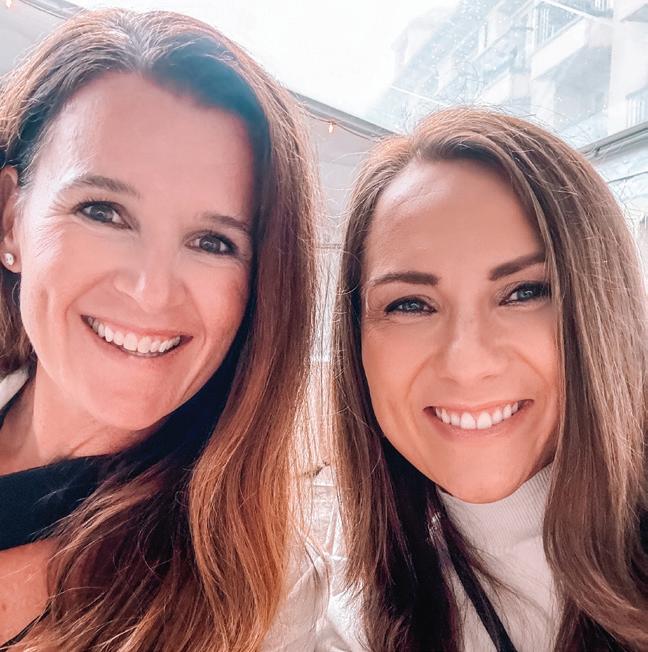
bringing women into the industry.
“About 10% to 15% of the workforce in landscaping is women— that can be a recipe for isolation and loneliness. The industry needs two things to get women excited about being part of it: to be sure that women have a place in the industry, and to make it a welcoming place to work,” Val says.
Cheryl Higley is Director of Education and Content for SIMA. Contact her at cheryl@sima.org.
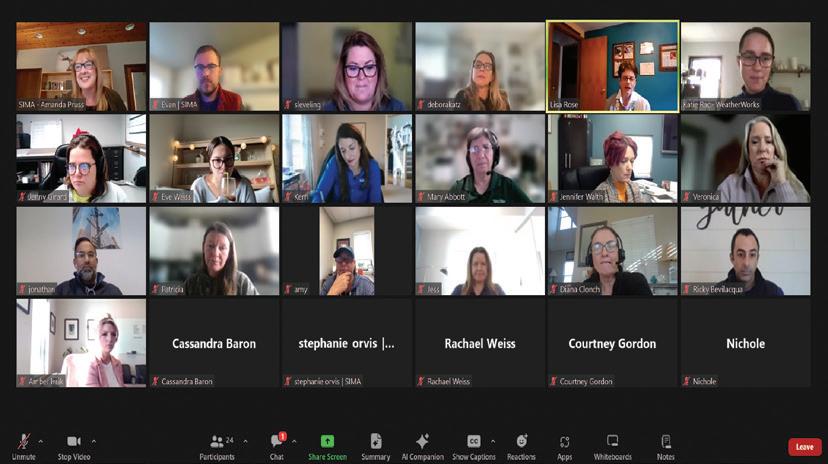
“When you work in an isolated market you can feel like you’re the only one,” she says. “When I worked for Brickman I had a built-in network to share best practices with. Later in my career I transitioned to a single proprietorship company, and I felt very isolated. I missed that network. When I started with SIMA, I wanted to create a space where women could connect professionally to network and learn from each other without a huge price tag. I’m so glad to be doing this under the SIMA umbrella—as a nonprofit, we are here to serve.”
Pruss is quick to note that the group is not just for women. “Valuing women in the snow industry is not just for women to do. I applaud the men who join our meetings and want to learn more.”
Visit www.sima.org/interest-groups or contact Amanda at amanda@sima.org to learn more.
They say, “Your network is your net worth,” but can you really put a price on the connections you build in this industry? Especially when those connections bridge borders between the USA and Canada!
David’s and Billy’s story started nearly five years ago, with a simple LinkedIn connection request. Like so many in the business world, they became part of each other’s networks, sharing insights and updates but without much

direct interaction. Yet over time, as they observed each other’s work, their shared passion for people, teams, customers, and elevating industry standards became more apparent. David, the President of Garden Grove Landscape and Snow Management in Toronto, and Billy, the VP of Client Relations and Sales at Outdoor Pride Landscape & Snow Management in New Hampshire, had much in common. What started as passive connections gradually revealed deeper shared values and goals.
Then, in 2023, a LinkedIn message from Billy sparked a conversation that neither of them could have anticipated. They went from casual LinkedIn connections to scheduling regular 30-minute Friday calls, diving into everything from sales best practices to family life. Their weekly calls were a no-limits space where both could freely share insights on industry challenges, emerging trends, and even the quirks of the unpredictable weather. They realized that they each brought a

The Sales Talk Show is a platform dedicated to supporting both seasoned sales professionals and the next generation of up-and-coming talent in the service industry. We’re here to bridge the gap between theory and practice, blending education with real-world experiences to bring you insights you won’t find in any textbook.
Our mission is clear: we’re here to uplift, educate, and inspire those pursuing careers in sales. Through real-talk, unscripted conversations, and practical guidance from industry experts, we aim to be a resource for growth and learning. This is not just a show—it’s a community. To follow, listen or watch past Sales Talk Shows visit @salestalkshow on LinkedIn, YouTube, Spotify or Apple.
unique mix of strategy, experience, and a go-with-the-flow approach that complemented the other’s style.
By December 2023, it was clear they had struck a chord. The conversations were dynamic, relatable, and the kind people would want to “listen in on”—the kind of friendly banter you’d expect to hear between close colleagues. So, they decided to launch a podcast: The Sales Talk Show. They hired a producer and planned the launch of their first episode for April 2024—all without having met in person!
Finally, after countless texts, calls, emails and a podcast launch, they met face-to-face at the Snow & Ice Symposium in Pittsburgh in June. The connection they’d built online immediately felt like an old friendship, a testament to the strength of trust and shared purpose. Since that first meeting, they’ve each had the chance to visit each other’s companies, and their connection has expanded beyond their friendship to their entire teams.
In September, Billy and his wife Diane hosted David and his brother
Paul (VP and COO of Garden Grove) in Boston. Next summer, David and his wife Sabina look forward to hosting Billy and Diane in Toronto.
David and Billy’s journey highlights the transformative potential of social media and the unique camaraderie within the snow and ice management industry. As entrepreneurs, they know the grit and dedication it takes to build a business, which makes the journey all the more meaningful when shared.
The snow and ice industry is a community of like-minded professionals ready to support and lift each other up, proving that sometimes all you need is a colleague from another market who truly gets it. Why go it alone when there are thousands in this industry facing the same challenges?
David and Billy’s friendship and podcast stand as reminders that, sometimes, a “phone a friend” is all it takes.
David Lammers is President and CEO of Garden Grove Landscape and Snow Management in Toronto, Ontario. Contact him at david@ gardengrove.ca. Bill Butts is VP of Client Relations and Sales for Outdoor Pride Landscape & Snow Management. Contact him at bill.butts@ outdoorpride.com.
Hear more from David and Billy on the December episode of SIMA's Snow Talk podcast. Listen at sima.org/podcast


PATRICK WHITE
If there’s one thing that should bring people together, it’s the planet we all share. So perhaps it’s not surprising to learn about the diverse coalition —governmental agencies, private contractors, non-profits and associations—working to address the harmful impacts of chlorides on water bodies.
Chloride reduction efforts have been ongoing for more than two decades—and as word has spread and more has been learned about the issue of chloride contamination, the community of people concerned about the issue has grown. And ideas are being shared and borrowed across borders and between industry
applicator training program, and more states are pursuing similar initiatives.
Ted Diers, assistant director of the water division within New Hampshire’s Department of Environmental Services, says a major highway expansion project 20 years ago initially led to chloride concerns when pre-construction research revealed very high levels of chlorides in surrounding water. “We already had impaired water bodies and now we’re talking about doubling the size of the highway,” he recalls. “The project was needed, so we said we have to find a way to reduce the amount of salt being used.”
The state began to rely on brine for highway treatments, created a program to help municipalities buy better equipment to control salt applications, and created its own voluntary training program.

As New Hampshire crafted plans to combat chloride contamination, Diers connected with Phill Sexton, CSP, founder and CEO of WIT Advisers, based in New York. Sexton says that the corrosive effects of rock salt were well known even decades earlier. “But back then,” he notes, “very few understood the urgent negative forever impacts that chloride salts contribute to freshwater resources, including drinking water health.”
Sexton says it was after Allison Madison, program manager for Wisconsin Salt Wise, has seen the community of people who want to reduce chlorides grow with the more outreach she does.

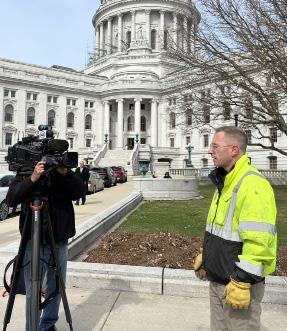
community of partners grows, the greater the likelihood of success in coming up with new strategies: “I’ve spoken to so many states and countries about these programs and what’s very clear is that someone is going to figure out better approaches. There is a strong period of innovation going on, with technology developing really rapidly and more adoption of this technology. The more brains we can put toward this issue…the more we focus on it, the better.”
reading an alarming research paper in 2008 that he “started to tune into the issue of road salt pollution impacts contributed by the private snow and ice industry—my industry. It showed conclusively how much of the issue was originating from private parking lots and roads, much more so than highways.”
Realizing their shared interest in, and alarm about, the issue, Diers and Sexton began collaborating as part of a public/private effort to find solutions. It’s just one of many such collaborations that have taken place around chloride contamination.
Diers says that in the early days, there weren’t many people involved in the effort. “Now we see a lot more advocates for it, as seen by the popularity of the Salt Symposium (an annual conference co-presented by SIMA and the NH Department of Environmental Services), which sells out. This shows a desire among people to interact and learn from each other on this topic.” He adds that “the partnership with SIMA has been critical for us. Given how small of a state we are, having partnerships is critical on this issue.”
And Diers says that the larger the
Allison Madison, program manager with Wisconsin Salt Wise, a coalition of organizations from across the state working together to reduce salt pollution, says it’s critical to grow the community of people who want to be part of the solution. “I try to get out in front of people as much as possible,” she explains. That happens through speaking at events, media appearances, webinars and more. Wisconsin created an annual Winter Salt Awareness Week to bring home the message. States from Maine to Colorado are also participating in and promoting the event. (The 2025 event is Jan. 27-31. Learn more at wintersaltweek.org). Madison says that every little bit of knowledge sharing— between states, between counties, between companies—helps grow the community. For example, Wisconsin Salt Wise hopes to get money into the governor's budget to replicate Ohio’s “H2Ohio” grant program to support the purchase of storage and equipment to reduce salt use by public and municipal road crews.
For Sexton, the community that has formed around this issue has both surprised and encouraged him. “The unanticipated positive benefit of salt pollution is the community of stakeholders we’ve managed to either develop or connect with in the past decade,” he says, citing the broad collaboration of stakeholders
who are passionate about reducing salt/chloride loading. “It includes everyone from non-government organizations, municipalities, and commercial property owners/ managers to environmental agencies, state DOTs, watershed management districts, and contractors.”
Acknowledging the initial resistance some feel to reducing salt applications, “Change is hard and can be scary,” Madison says.
Diers agrees that one of the biggest challenges in reducing chloride contamination is simply changing mindsets. For so long the prevailing idea has been that more salt equals safer conditions.
“That’s the next nut to crack,” he says. “How do we create different [types of] contracts to incentivize salt reduction? How do we get communities to learn each other’s great work? How do we get to the place that the property manager isn’t calling you because their boots don’t crunch on salt when they walk? That societal expectation is slow to change, but the bigger we grow the network, the more normal it gets.”
And that comes down to changing culture, Sexton says. “It’s taken me and our team nearly a decade to identify and learn how to work with the fact that the amount and frequency of road salt applications is a deeply embedded human behavior issue.”
While that fact can create a challenge, he notes that it also presents an opportunity: Once a company or organization learns a new way (WIT Advisers has created SWiM standards to guide effective and responsible applications), it embeds a new mindset in them.
“The single greatest success is when the ‘buy in’ happens, and we aren’t needed to sustain and continuously improve reduction efforts,” he says.
Sexton advises focusing on “purpose” (rather than “cost savings” or the general message of “change”) when promoting the concept of reduced salt applications. “People,
Continued on page 30
Continued from page 29 companies and organizations will buy into a purpose,” he’s found.
Even as the community of advocates builds, it’s not always easy to see that progress is being made.
Sexton works with organizations to get baseline measurements of their salt use, and from there to accurately measure their salt outputs, with a goal of identifying areas for continuous improvement. This sort of data is quantifiable.

At the same time, Diers notes that quantifying results by looking at decreased chloride content in water bodies can be more difficult. First, chlorides remain in the environment for a long period of time, so it might take 5 or 10 years to see numbers start to drop, even after instituting changes.
And, second, each winter is different and, increasingly in many places, warming weather has temperatures hovering right around the freezing

“Now we see a lot more advocates for it, as seen by the popularity of the Salt Symposium, which sells out. This shows a desire among people to interact and learn from each other on this topic.”
—TED DIERS
mark (“the hairy edge,” he says), which makes it more challenging to reduce salt usage. “Constant freezethaw cycles are problematic,” he notes. What both point to as a sign of progress is the momentum the overall effort has gained. “After over 10 years of slugging away at this issue, having
Everyone’s been waiting for it and the rumors are true! KAGE’s latest invention, the new and improved wing plow, is now on the market!
“The SnowDozerTM Wing Plow is the first of a new generation of snow plows and pushers that will increase efficiency and reduce downtime.”
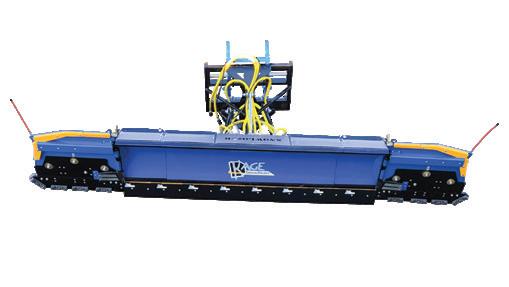

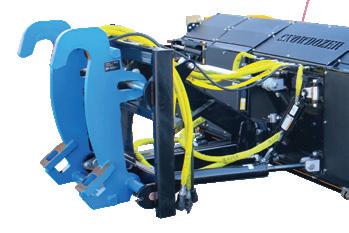






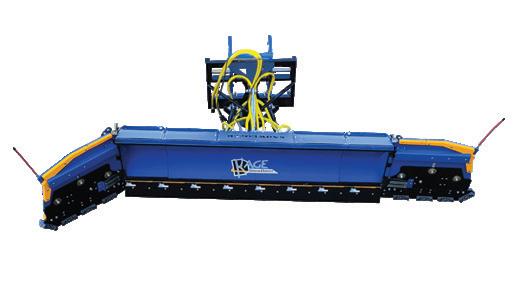




“It’s taken me and our team nearly a decade to identify and learn how to work with the fact that the amount and frequency of road salt applications is a deeply embedded human behavior issue.”
—PHILL SEXTON, CSP, ASM
met a great deal of resistance to change early on, our team is extremely gratified to experience a broader shift in the mindsets of dozens and getting closer to hundreds of organizations that are now asking for help rather than be told they need to change,” says Sexton.
“The success some firms have had in reducing salt use is remarkable,” Diers says. “There is a lot of increased awareness in public and in the industry.” He points out that some contractors are actually promoting salt reduction as part of their business model. And he credits liability relief laws with allowing people, “especially property owners,” to feel more comfortable about reducing salt applications.
Madison says the goal now is to continue educating people and growing a community committed to the cause. “We focus on training applicators on best practices, and sharing case studies [about salt reduction success stories]. These are perhaps the most powerful tools, because then people can see themselves in someone else,” Madison explains.
Another part of the mission is to educate the general public, she adds: “If they don’t understand the negative impacts of salt, then their default request is more salt.” So the goal is to reach everyone from residents to property managers.
No one company, municipality,
DOT agency or non-profit can solve the salt dilemma by itself, she concludes. “But we can all do our part —that is the only way forward.”
“Every now and then I get an email from someone saying they saw me do a presentation a year or two earlier and it planted a seed, and now they are advocating for change, or have purchased a new piece of equipment to reduce their salt use. It doesn’t always happen immediately, but if we’re not talking about it, we can’t make progress. And the more smart brains we have focused on this issue, the better.”
Patrick White has covered the landscape and snow and ice management industries for over 25 years. Contact him at pwhite@meadowridgemedia.com.


Cyber incidents happen to businesses of all sizes. Meet with your IT provider, as well as your insurance agent.
As a small business, am I really at risk of a cyber-attack? Why would a cybercriminal target me? We hear it far too often—client thinks they do not have exposure because they do not take credit card payments or they don’t have a website. There are many more ways a cyber event can happen.
The cyber insurance marketplace has seen several changes over the years as claims evolve and hackers get more sophisticated:
First-party cyber insurance coverages protect the insured for direct loss from a cyber event. These events can include ransomware, deception (social engineering, funds transfer fraud and telephone fraud), legal costs, forensic vendors, income loss, data restoration and reputational harm.
Third-party coverages include regulatory fines, damages and defense costs, payment card penalties, etc.
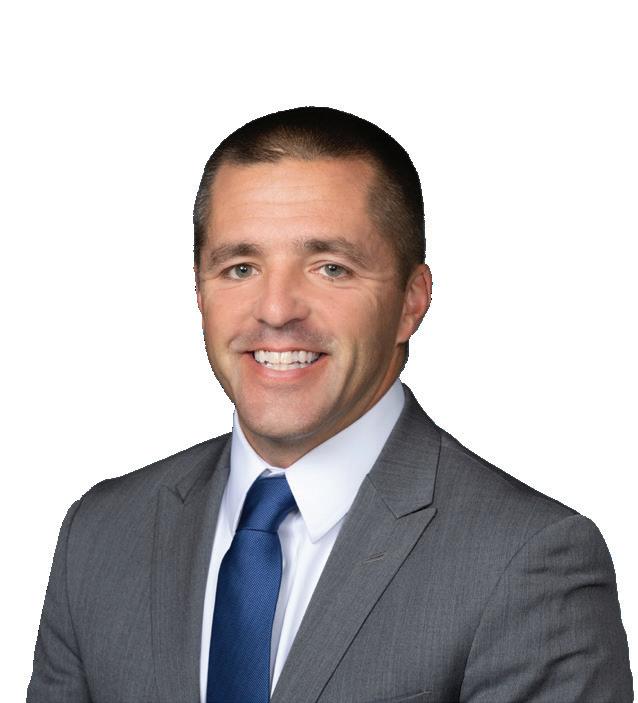
According to the U.S. Department of Labor, personally identifiable information (PII) is “any representation of information that permits the identity of an individual to whom information applies to reasonably inferred by either direct or indirect means.
Your office manager comes into work on a normal day. They log into their computer and get the “skull and crossbones.” The message states their computer has been encrypted and they need to send “X” dollars to have the data released. What do you do? With a cyber policy, you would immediately reach out to your carrier, make them aware of the incident and allow them to negotiate the release of the data.
Social engineering/funds transfer fraud
You receive a call or an email from someone alleging to be your salt supplier. The hacker says that they have new banking information that needs to be updated. They proceed to give you a new routing and account number to update your records and send direct payments to. Your office staff
Continued on page 36

PII is information: (i) that directly identifies an individual (e.g., name, address, social security number or other identifying number or code, telephone number, email address, etc.) or (ii) by which an agency intends to identify specific individuals in conjunction with other data elements, i.e., indirect identification. (These data elements may include a combination of gender, race, birth date, geographic indicator, and other descriptors).
Additionally, information permitting the physical or online contacting of a specific individual is the same as PII. This information can be maintained in either paper, electronic or other media.” (Guidance on the Protection of Personal Identifiable Information, n.d.)
When the temperatures are plummeting, you need to be ready to take on ice and slippery conditions. The MARAUDER™ line of hopper spreaders expands with the addition of poly units, with your choice of the ALL-NEW HELIXX™ auger or pintle chain material delivery systems. And an enhanced, easy-to-open lid design comes standard to protect your de-icing material from the elements.
MORE JOBS. DONE FASTER.



Continued from page 34
updates the data given and proceeds to send the money to the hacker’s bank account. You are now out that money, and you still owe your supplier.
Another example is that a member of your team receives an email that looks like it came from you, the business owner, that directs them to
make a payment to ABC Company to pay an invoice. Since it appears to have come from your email, the employee sends the money. A check is placed in the mail, and a criminal intercepts the check prior to its arrival at your vendor. They are able to washout the payee information and can deposit the check.
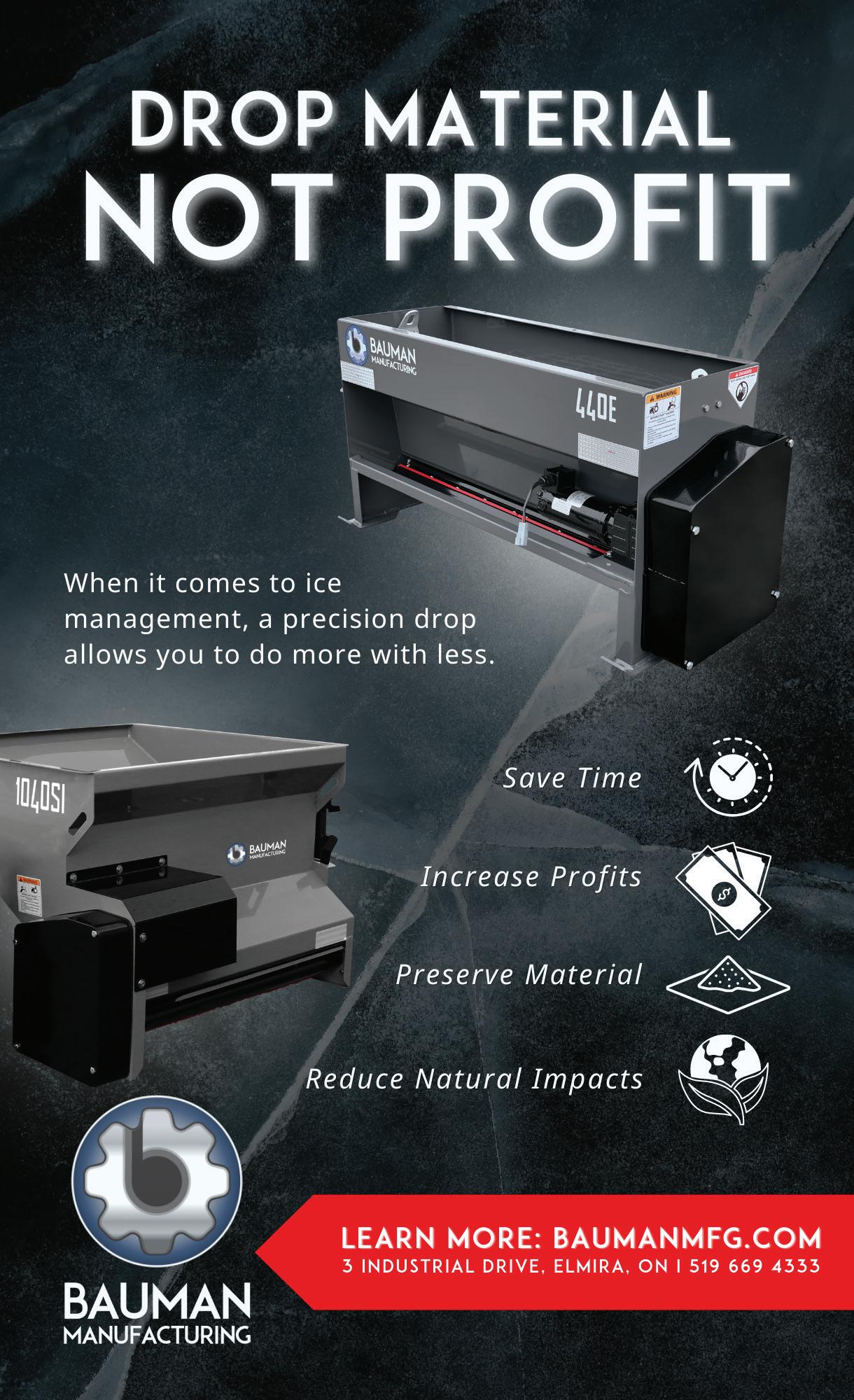
An example of this is that an email that looks authentic is received by an employee. The employee clicks the link within the email. This allows the hacker to get into your network, where they have access to your employees’ personally identifiable information (PII). A cyber insurance policy will help to close this network vulnerability, and will provide coverage for the regulatory fines
Take the necessary steps to protect your business data. A few steps to get started are locking down your network; making employees aware of what a phishing email could look like; setting up multifactor authentication on all electronic devices; and always verifying where you are sending money, before sending it.
as well as the identity monitoring requirements. It will also provide coverage for defense and damages that might have occurred due to this attack.
Cyber incidents happen to businesses of all sizes. Meet with your IT provider, as well as your insurance agent. If you currently have a cyber insurance policy, take advantage of their offerings for training and consultation.
It is important to make sure that you are taking the necessary steps to protect your business data. A few steps to get started are locking down your network; making employees aware of what a phishing email could look like; setting up multifactor authentication on all electronic devices; and always verifying where you are sending money, before sending it.
With proper protocols in place, you will reduce the risk and help keep the costs down on cyber insurance.

At VSI by BOSS Snowplow, we’re providing snow and ice contractors with a new solution in the fight against ice. By introducing liquids, snow and ice professionals can save money on materials, save time and increase their bottom line. It’s one more way BOSS is proving that we do Whatever It Takes to BACK YOU UP.
“Fail-safing” can ID failure points and bottlenecks that negatively impact the customer experience

BY JENNY GIRARD, ASM
Now that the season has begun, you may have had a few small events or even experienced a major storm! These first few events are a crucial time to review not only your operations and processes but also your client interactions. How you interact with clients can determine your success throughout the rest of this season and beyond.
So, what makes a happy client? Perfect service? Cheap price? Immediate action? Ease of interaction? Perks? The answer may be different for every client. What is not different is that you will interact with every client. How each client perceives these interactions can be crucial to building a strong and lasting contractor-client relationship.

In a service blueprint you will review six areas:
1 CUSTOMER INTERACTION. These are the actions that a customer takes. In the example, the client requests information.
2 PHYSICAL EVIDENCE. With that action there will be some type of evidence that this took place. For example, an email, a phone call, or a form that the customer fills out.
3 FRONT OF STAGE LINE OF INTERACTION. This is the interaction that is visible to the customer. Either the process, resource or individual would directly interact with the customer. In the example, it would be the salesperson who speaks with the customer and the website the client reviews.

4 BACK OF STAGE LINE OF VISIBILITY. These processes, resources or individuals would directly assist your customer but not interact with them. In this example, it could be a website host or an office assistant managing the forms.
5 LINE OF INTERNAL INTERACTION SUPPORT PROCESSES. These processes, resources or individuals would not interact with the customer but are crucial for supporting the interactions. An example would be a marketing campaign, or the human resources or finance departments.
6 FAILURE POINT OR BOTTLENECK. Review all interactions throughout the process to find any failures or bottlenecks, and place an indicator.
During those first few weeks of service, especially with a new client, there can be a learning curve. Each season you build stronger relationships with that client as you learn the optimal behaviors through the interactions your customer has with your organization. The key is to learn what that client expects after a specific interaction. This is what will drive your customers’ opinion of the level of service that has been provided and will determine the success or failure of your relationship.
Take a moment and think about the different interactions a client has with your company—from the moment they reach out for a quote to the point of service. Believe it or not, there are a lot of interactions just between that first phone call to the moment you begin estimating.
Through all of these interactions, failures or bottlenecks can occur that derail your customers’ experience, leading to dissatisfaction. A great way to review these is through the fail-safing process, which is a common practice within manufacturing and service companies.
Once you have identified the failure point(s), it’s important to review what procedures can be put in place to prevent these failures.
Where do you start? Begin with a service blueprint—a chart that identifies the relationship between multiple service interactions, reviewing people, resources and processes that are directly correlated in a customer experience (see example service blueprint).
Service blueprinting allows anywhere from a highlevel to a deep look into your processes from a customer perspective. For example, you could identify the desired outcomes of an interaction between your organization and your client (high level). You could focus your review on one area of the customer journey due to the complexity of that interaction. Or you could focus on the service provided—all people, resources and processes within this interaction (deep look).
Finding failure points or bottlenecks can improve your efficiency, bring clarity to teams, drive the bottom line and, most of all, improve relationships with your customers.
Once you review your service blueprint, what do you do once you have found a failure point or bottleneck? Review and consider whether you have a system in place to prevent it. A great example of basic fail-safing is looking at the pump at any gas station: are there instructions on the pump clearly explaining what to do and what not to do? Review your interactions with your client with the same mindset.
Reviewing your interactions with your customers is



From storage and mixing, to application, we have the right equipment to keep you ahead of the storm and prepared for anything mother nature has in

Continued from page 37



By MICHAEL WAGNER, CSP, ASM
Advanced technologies are hitting the snow and ice management market at a rapid pace, and it can become an overwhelming challenge to know which might be right for your operation.
Let’s examine why it is incredibly vital to partner with vendors and suppliers in determining the best solutions, and why it is so important for them to stand by their products and services so all interested stakeholders are successful.
Some of the biggest mistakes an organization can make in selecting a new tech solution are not researching the available solutions, not fully understanding their operational objectives, and not testing multiple options before clicking the “BUY” button!
It is vital that business leaders consider the key points in this article to arrive at a solution that fits their
individual needs. There is definitely no “out of the box” solution. For instance, a snow and ice company that has various regions throughout the country will expect a vastly different solution and onboarding process than a local 10-employee business.
There are many advances in product and service solutions for the snow and ice industry. Here are just some of the high-tech options you might consider utilizing in your operation:
• Weather tracking, reporting, and forecasting
• Mobile and digital timekeeping and data retention
• Enterprise management software
• Liquid and granular spreading equipment
• Equipment GPS, telematics, and site reporting
• Site monitoring with cameras, photographs, and videos
It’s important to consider the reasons you might want to take advantage of some of these tools. Is it to stay competitive in the market, meet client and site expectations, improve your internal processes, or maybe a combination? There are so many technologies to consider, but knowing what you are trying to accomplish is the first step!
When you are trying to decide how to select options for potential improvements, you must begin with an objective. We’re going to use the example of weather forecasting and reporting, since this is well known and common throughout the industry. The same processes and
principles outlined can be applied to any technological change.
Let’s say our objective is to be more proactive in our deicing operations and response times. Start to think about your current operations and focus on key data such as:
• How much time does it take us to prepare equipment and crews for deicing operations 24 hours prior to snowfall?
• How many pieces of equipment do we prepare?
• How many employees do we have to prepare?
• How many sites do we service?
• What services will be performed?
These are some of the most important factors to consider as you work to better understand the time it takes to prepare for service and still achieve your onsite service at 24 hours prior to a storm. Do you require 12, 24 or 36 hours to prepare? Only you will be able to determine these thresholds and what you require.
Let’s say you require 24-hour notice to prepare and be on-site performing services 24 hours before a winter event. This indicates that you need reliable weather forecasting at least 48 hours before a storm. While you are receiving weather data and reports, make sure you keep a separate document or spreadsheet with notes on how well you performed given the weather forecast and event details, as well as tracking the accuracy of the forecasts.
The second phase would be meeting your objective of response time for the event. This is where you will have to do a little homework and know how much time it takes for your personnel to prepare for different weather events, knowing the quantity of sites, equipment needed, and work to be performed. Once you come up with a total number of hours or days it takes to prepare everything for an event, you then can determine how many hours or days ahead of time you are looking for accurate forecasting. As mentioned above, make sure you compare weather data, forecasting, your response efforts, and overall achievements, and determine which service and product provides you with the most accurate forecasting and data to achieve your preparation and service goals.
This may be the most pivotal part of selecting new technologies. When selecting a new product or service, it is important for any organization to identify a few potential solutions, and to demo, test or run short trial periods before they make their final selection. Many vendors allow and support these opportunities as it helps them acquire the sale, as well as showcase their product and really let the user gain the full experience before making a commitment.
In selecting a vendor and understanding which one stands out compared to the others, ask yourself these questions:
• What are our expectations through the onboarding process?
Continued on page 42
Continued from page 41
• How quickly do we expect answers and resolutions on issues?
• What time commitment and team involvement do we expect from the training? (How often, who is involved, are we training in large or small groups and then re-training others)
• Do they like receiving input from users?
• Do they have an eye on the future and have a plan for their service to evolve with the industry?
• How well do they align their service with industry norms and expectations?
• Do they set themselves apart from the competition with their service or product?
• Is pricing reasonable in helping you achieve your financial goals?
• How accurate is the reporting and data services?
• How long do they store weather and storm data?
The goal in the vendor selection process is to gather information and compare your findings. Beyond all the good things about the product, get granular and gather information from your team on what works and what doesn’t.
You may have two, three or even four services offering you relatively similar products. What you’re really trying to determine is which one, and only one, is the standout with the greatest potential to help you achieve your objectives and goals. Determine who will be your partner in business!
So much of successful implementation of new technologies in the workplace depends on the support you have from your vendors and the relationship you have built with them. This should be a partnership, since the ultimate measure of success is when consumers are pleased because these
products and services have allowed them to achieve their goals.
Even if the integration is challenging at times, remember that change is tough at any stage of business, since people have become accustomed to performing tasks in certain ways. When personnel become comfortable, they feel more effective and more confident in their work. Change brings uncertainty, so it is the job of operations supervisors, managers and executives to press forward on their objectives while participating with their employees in managing those obstacles and building on the small wins whenever possible.
Michael Wagner, CSP, ASM is Director of Operations at Designscapes Colorado Inc. Contact him at 303-328-5554 or mwagner@designscapes.org.



























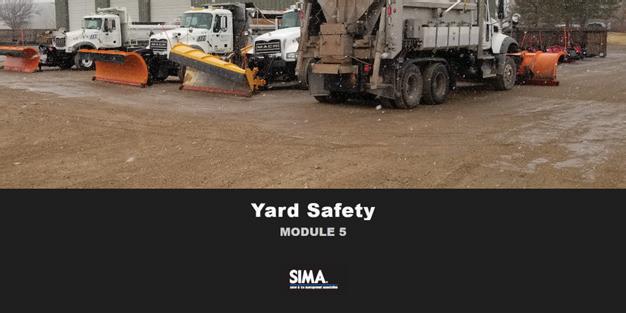


When you’re battling snow and ice on a property that never stops—shoppers, cars, deliveries around the clock—you often have only one pass to get a surface clean before vehicles and foot traffic turn it into hard pack. That’s the reality for Trees on the Move in New Berlin, Wisconsin.
For almost 50 years, Trees on the Move has covered the full-service landscaping needs of commercial clients throughout southeastern Wisconsin. Their services include design, concrete (standard and decorative), retaining walls, patios and walkways, outdoor living, irrigation, green and blue roofs, lawn maintenance, trees (grown on their 200acre nursery), and of course, snow and ice management.
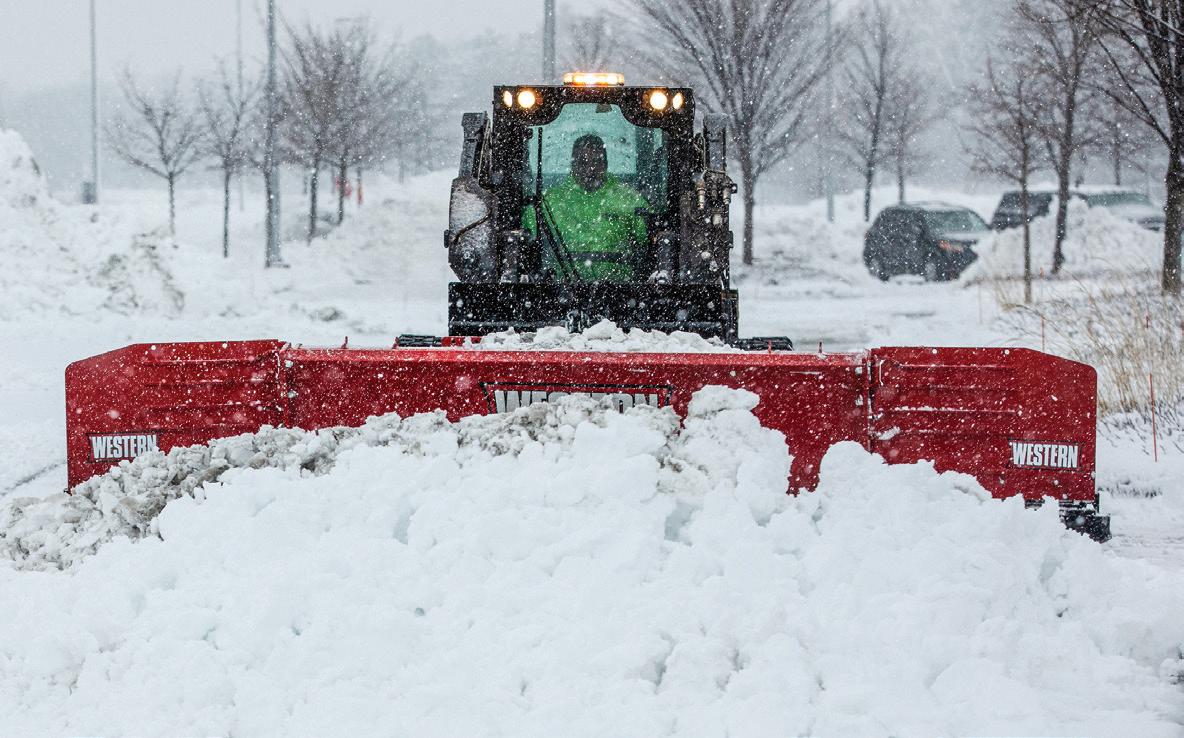

“On an average plow event, we were using 10%-15% less salt. We didn’t have to go back over the surfaces with salt because they cleaned up so well with the plow.”
– BEN OLESON / TREES ON THE MOVE
The secret to success for Trees on the Move is to be a true partner with its clients, understanding each property and the needs of the facility managers.
“Central to who we are is a team mentality,” said Trees on the Move President Gary McHugh. “We carefully choose our staff, clients, and suppliers who align with the quality of service that Trees on the Move promises and delivers upon.”
Trees on the Move services a portfolio of over 125 premier retail and corporate campuses throughout southeastern Wisconsin. Ben Oleson has been with Trees on the Move for 14 years, seven of those years in commercial project management at some of Milwaukee’s busiest shopping and office complex locations.
“Retail sites have constant traffic,” said Oleson. “Vehicle traffic into the parking lot packs down the snow if we can’t get it clean on the first pass, making the property really hard to keep clean.”
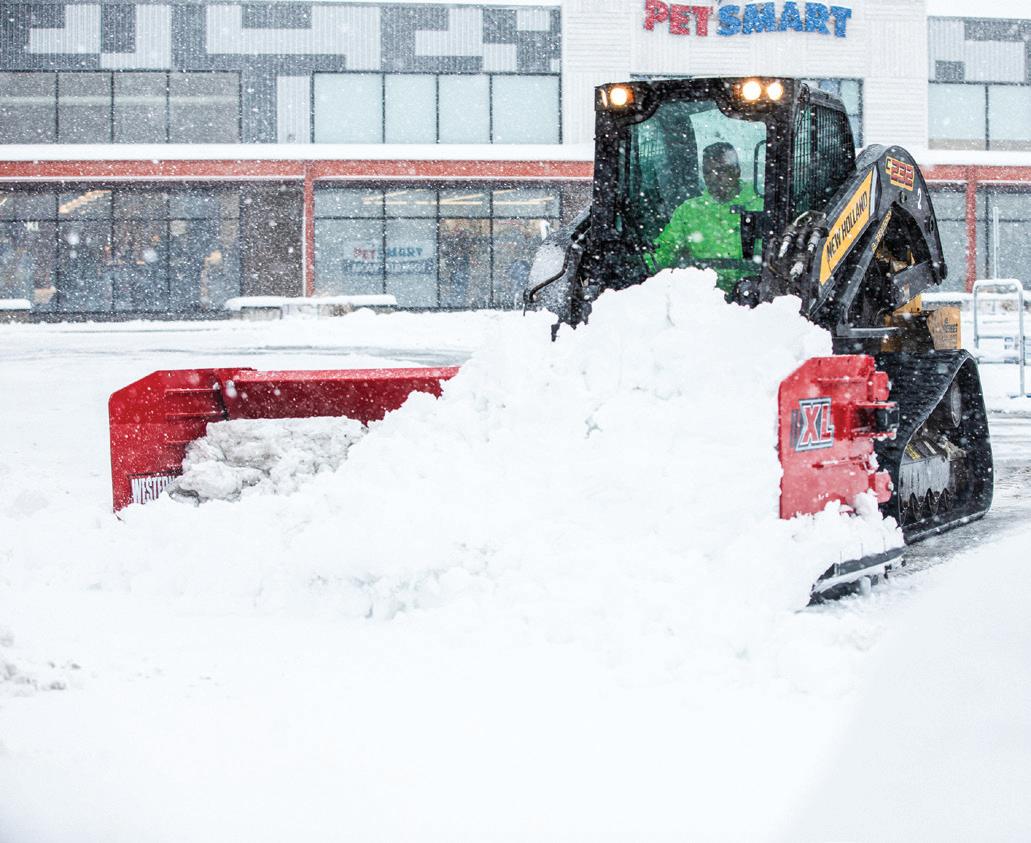
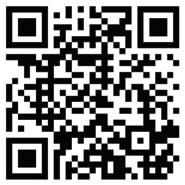
That’s where the WESTERN® line of PILE DRIVER™ fixed wing and hydraulic wing pusher plows make an impact. Trees on the Move upgraded from poly edge basic pusher boxes to Western Products’ TRACE™ edge technology. The carbide edge and 2’ independent sections that contour to the pavement allowed Oleson’s crews to scrape down to the pavement with every pass and attack the hard pack that formed throughout the lots due to constant traffic.
“On an average plow event, we were using 10%-15% less salt,” said Oleson. “We didn’t have to go back over the surfaces with salt because they cleaned up so well with the plow.”
In addition to the efficiencies of the TRACE edge, the hydraulic wing movement of the PILE DRIVER XL pusher plows allowed the Trees on the Move crew to better service complicated properties with a lot of curbs, islands, and cart corrals. The infinitely variable wing placement allows the loader operators to configure the plows in the best way to tackle each obstacle. The TRACE technology extends to the 3’ wings so they can oscillate, trip, and raise/lower with the same movements as the cutting edge. This ensures a clean scrape in any configuration.
When looking to invest in new equipment and technology, it is important for Trees on the Move to feel confident that the investment will hold up and keep up with the demands of the snow and ice team. This was an important consideration when choosing to use the WESTERN PILE DRIVER line of pushers. After all, the cleanliness of the parking lots, roadways, and sidewalks that Trees on the Move service is a direct reflection of their reputation.
“Our equipment needs to be able to keep going,” said Oleson. “They need to hold up for 24-hour storms, because my people need to. And WESTERN did all of that.”

When the snow starts falling, there’s no time to waste. The world keeps moving, and the snow needs to get out of the way. The all-new PILE DRIVER™ XL pusher plows combine hydraulic wing movement with TRACE™ edge technology to move massive amounts of snow—scraping down to the pavement—so you can get more jobs done faster. Available in 8′, 10′, 12′, 14', and 16' widths, these pushers raise the bar on efficiency.
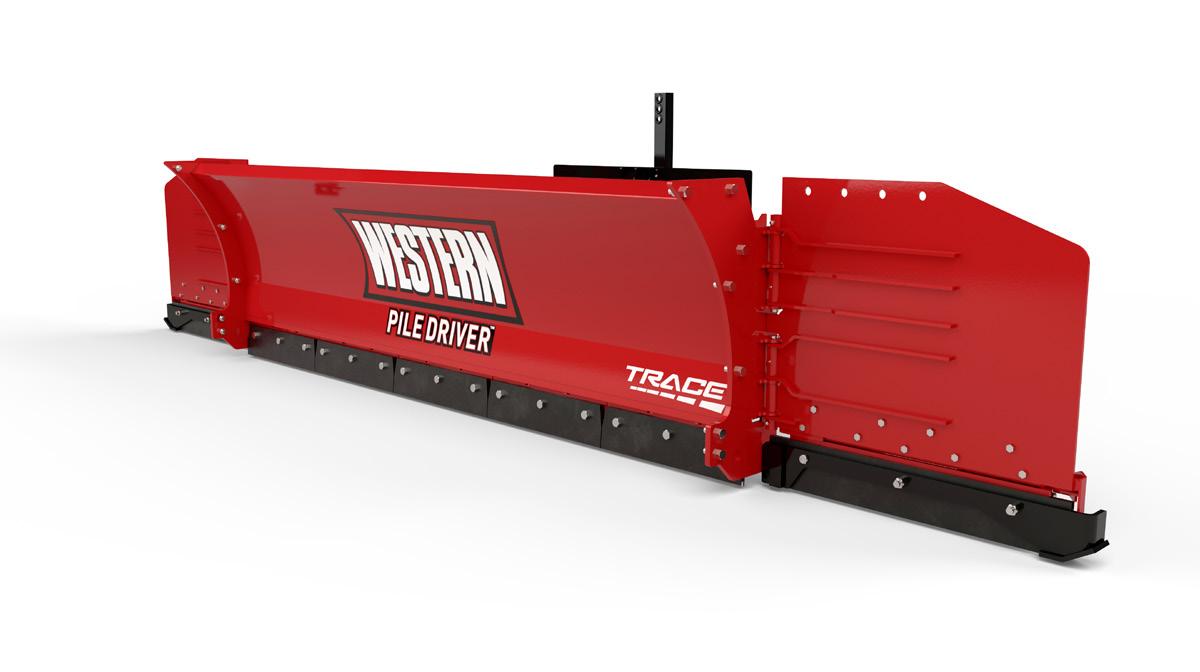


Designed by seasoned snow contractors, Yeti Service Management software stands as the industry’s preferred snow-first service management platform. While snow-focused, Yeti’s versatile platform is ideal for managing a wide range of field services year-round. Designed to streamline operations, our software equips you with the tools to effectively coordinate crews and resources while maintaining meticulous documentation standards. www.yetisnow.com

The bread and butter for snow contractors: info on start/stop time, accumulation, salt/plow or pretreat and everything else you need to know for the event. Norcast releases this breakdown multiple times before events with snow maps, futurecast, main risk factors, confidence and more. Better operational decisions incoming. www.norcastconsulting.com
Priced to be used in addition to your non-snow software, SG Advantage is the industry’s first hybrid bidding, routing, systems management and CRM software dedicated to snow and ice management. Not just for dispatching and tracking, the SG Advantage program focuses on liability protection, education and training for snow removal contractors both large and small. www.sgadvantage.com
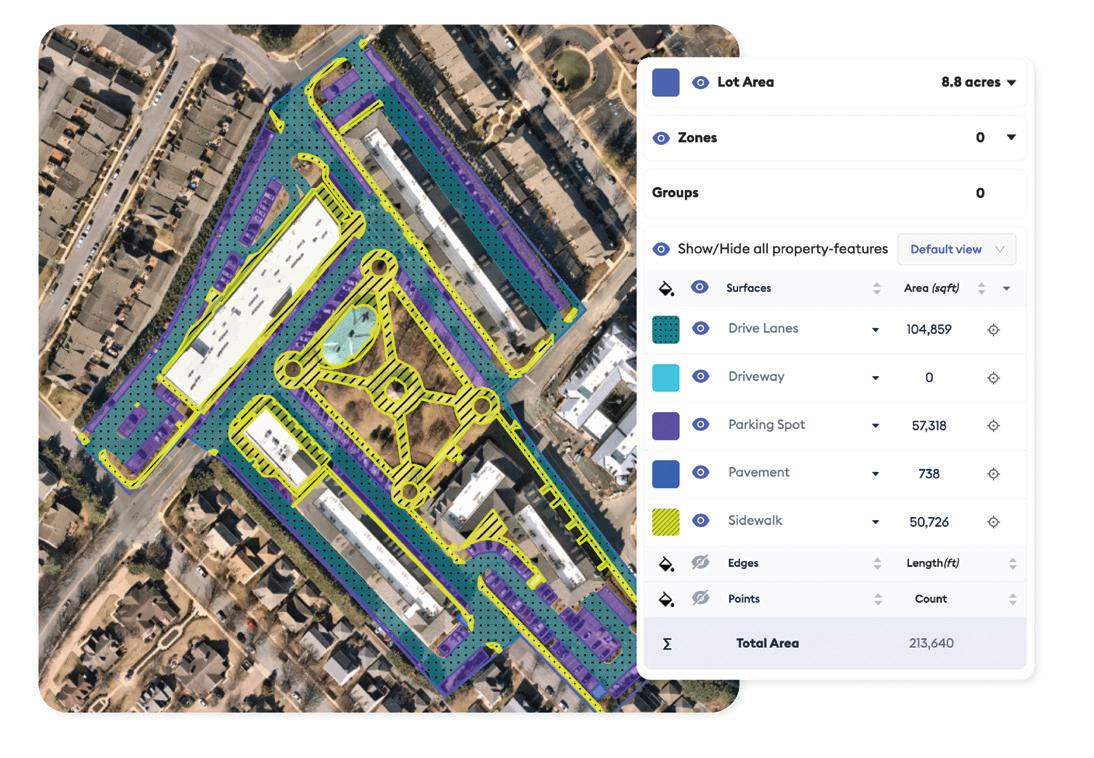
Attentive.ai’s Automeasure does takeoffs for you, so you don’t have to. Save 95% of time on site measurements; reduce fuel and manpower costs. Measure hundreds of sites in bulk easily. Get automated takeoffs guaranteeing 98+% accuracy built on the latest aerial imagery featuring drive lanes, sidewalks, pavements and parking lots. www.attentive.ai


Rediscover CrewTracker Software. Since 2004, we’ve revolutionized snow and ice management operations with our constantly evolving advanced Digital Services Platform. Optimized efficiency with service routing, property and crew management, analytics, mobile apps and more. Seamlessly connects with weather data, QuickBooks and other industry leaders. www.crewtracker.com

trueWeather is setting the standard as an innovation leader for weather providers in the snow removal industry. Pinpoint forecasting accuracy with pavement information; Certified Snowfall Reports delivered in 24 hours; freezeWarn, a refreeze verification service; and salt and brine guidance powered by VSI by BOSS Snowplow. www.truewx.com







Designed to help snowfighters keep eyes on locations for a reasonable price, Frost Vision Cameras provide an alternative to trail cams and other cellular cameras commonly used for site visibility. Frost Vision assesses your camera’s photos for you and alerts you when specific conditions are detected. www.frostsolutions.io
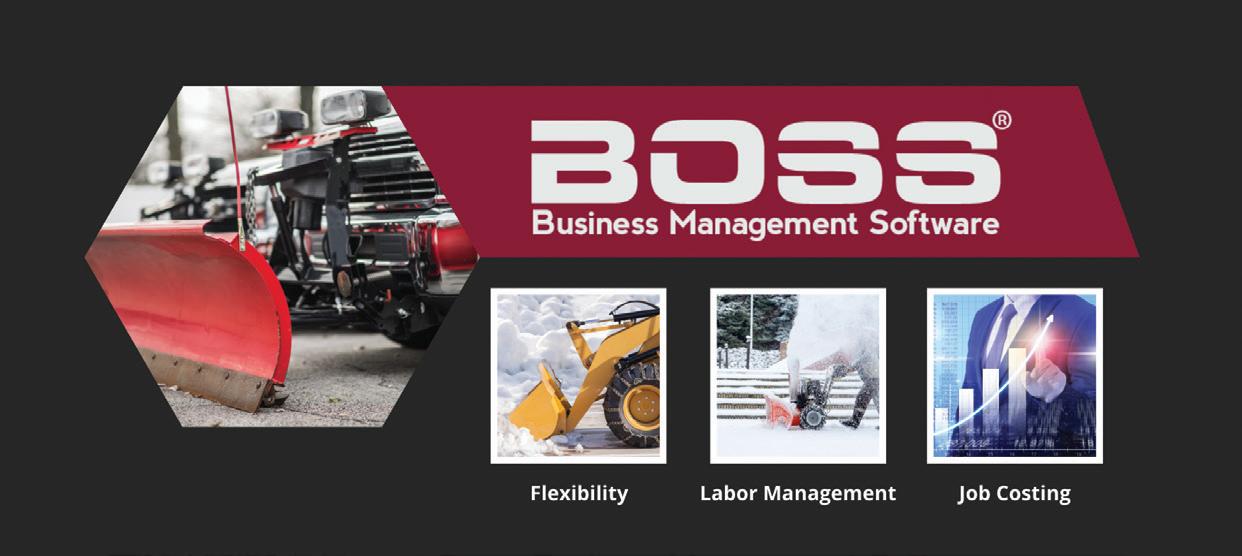
The Integra Group
BOSS Business Management Software empowers snow removal contractors with real-time tracking, dynamic route optimization and seamless job scheduling. It maximizes efficiency by automating workflows, enhancing team coordination, and delivering instant updates. With powerful billing, reporting, and client communication tools, it ensures faster service, increased profitability and superior customer satisfaction. www.theintegragroup.com

Experience peace of mind for your billing needs with Certified Snowfall Totals. For over 38 years, we’ve been the industry’s trusted leader, delivering timely and precise post-storm documentation. Take your operations to the next level with VeriFreeze, ensuring your pavement deicing efforts are backed by undeniable data. Use coupon code SIMA24 to save $50 www.certifiedsnowfalltotals.com
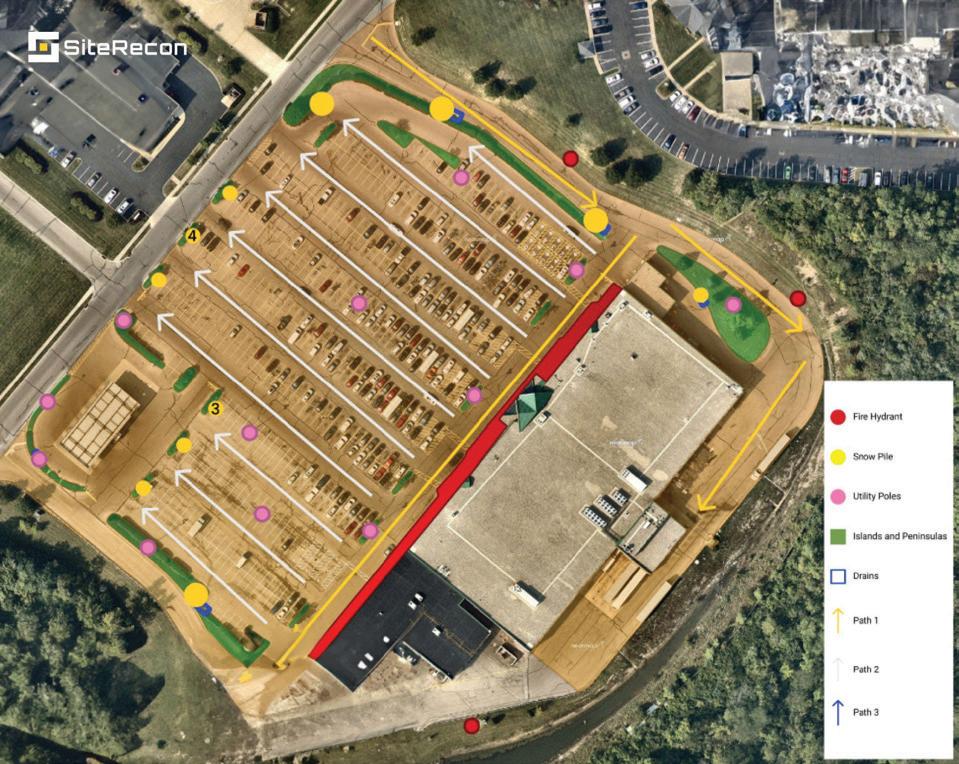

SiteRecon Inc.
SiteRecon frees up your time by automating the mundane (measuring properties), organizing your communication (job notes + photos on the map), and standardizing your quality assessment process so that you can deliver the quality of service you promised.
www.siterecon.ai
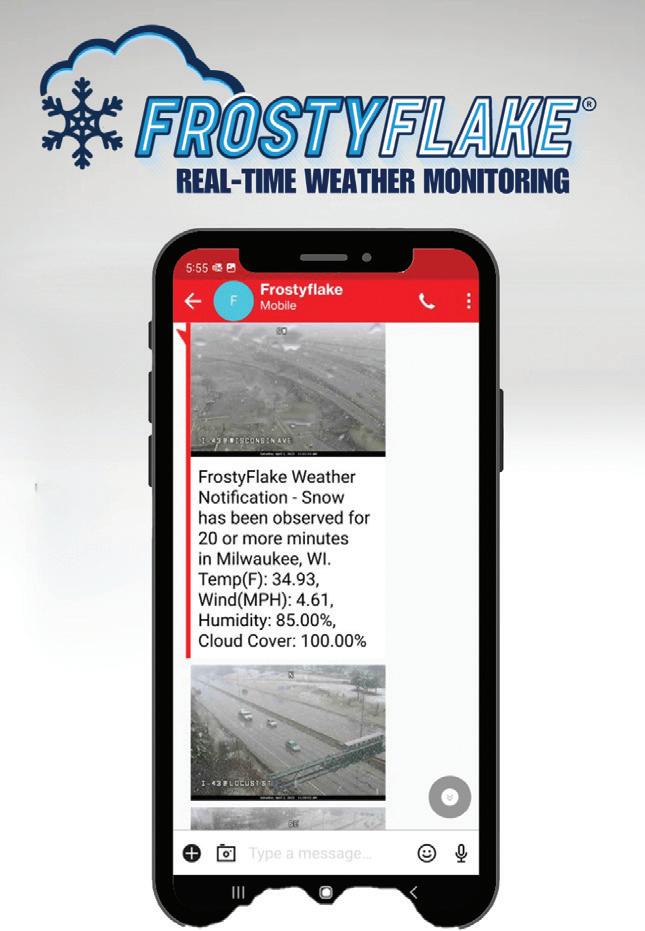
Reduce the burden of watching the weather with FrostyFlake! Our AI monitors 20,000 towns across North America, providing real-time updates on rain and snow, so you don’t have to rely solely on forecasts. Save costs and enjoy better sleep this snow season. Try it free for 14 days! www.FrostyFlake.com

Nektyd LLC
Nektyd streamlines snow and ice management with advanced scheduling, real-time tracking and efficient client communication. Enhance operational efficiency and elevate client satisfaction with our all-in-one, user-friendly software, specifically designed for the unique demands of the snow and ice management industry. www.nektyd.com
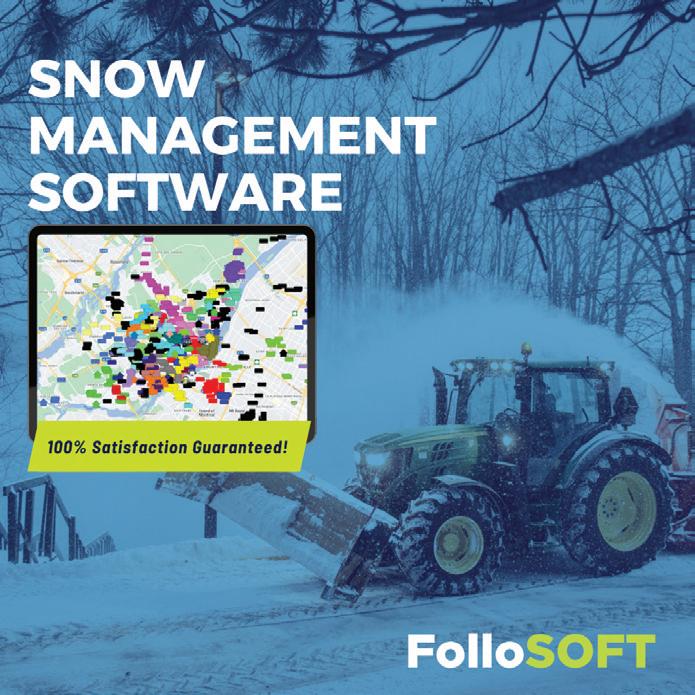
FolloSOFT is a dynamic software for snow removal businesses, offering contract management, real-time tracking, and a prospecting menu to boost route density. With ongoing feature updates, it continuously enhances efficiency, client communication, and service delivery, helping companies grow and adapt to ever-evolving industry needs. www.follosoft.com/sima-spotlight/



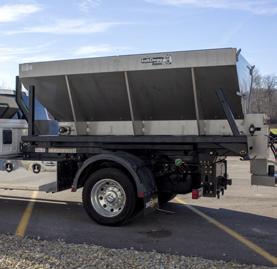


Stay connected with your snow team using Team Engine’s centralized communication platform, now with WhatsApp messaging and AI-powered translation. Perfect for teams with a distributed workforce, H-2B workers, or staff without U.S. phone numbers, this text-first tool ensures critical communication reaches every snowfighter—no matter the language or device.
www.teamengine.io

Sitefotos’ Snow Command Center is the snow industry’s #1 field service platform. Manage your snow storms in our AI-enabled live view of your sites with check ins/outs, photos, snow totals, traffic cameras, and integrations with major work order systems including Service Channel, Corrigo, FM Pilot, etc. www.sitefotos.com
Landscape Management Network (LMN) is the industry leader for landscape business software and development. Built for landscapers by landscapers, since its founding in 2009, LMN has provided landscapers across North America with the tools they need to sustainably grow their businesses. www.golmn.com



The StrikeSmart PLUS system is a next-generation control system. This controller offers a real-time weather forecast, and with HTrack, you’ll have access to up-to-theminute weather forecasts tailored to your location. Based on gathered data, HTrack provides real-time guidance recommendations for your spreading rate directly to the spreader controller. www.hilltipna.com
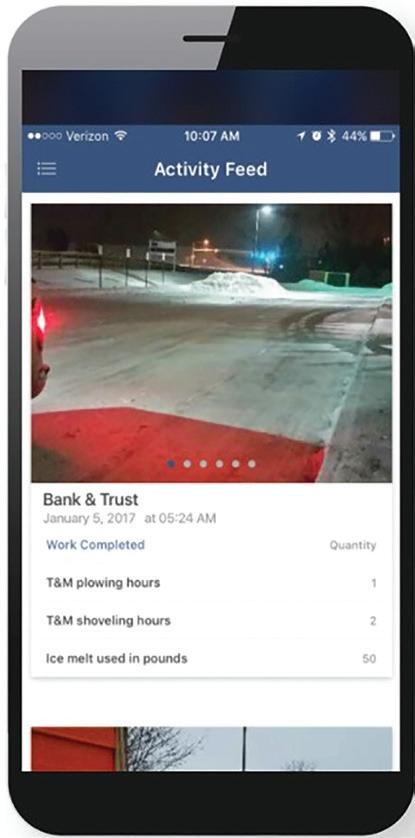
FieldVision is a mobile application that enables crews to record services electronically with photos, eliminate paperwork, and create invoices and reports. Integrates with QuickBooks, ServiceChannel and Corrigo. Our CashFlow module works with third-party financing companies to get you paid the next day on your services. Reduce administrative time by 80%. w ww.dtsisoftware.com
Don’t miss out on the latest and greatest products in 2025.
The new Test Drive newsletter will feature expanded coverage of the sections that will run in each issue of Snow Business. Make sure you’re subscribed to the Test Drive newsletter at sima.org/subscribe!








Level up your communication by honoring your people’s dignity and demonstrating flexibility when they are struggling, and watch the magic happen.
Most of the challenges that we face in life are emotional matters. Logically discussing them and taking action to address them isn’t easy. This is something that people have struggled with throughout history.
When people can’t discuss their emotions, it starts a vicious cycle. They get stressed, frustrated, burnt out, and may feel like nobody can or would understand what they are going through. It’s a mental damper that people carry with them everywhere. It can lead to a lot of negative effects at work, including but not limited to:
•decreased engagement,
•subpar performance, and
•increased susceptibility to conflict.
As a business owner or a leader, you might be stumped as to why a team member seems to be so removed from their work. You might notice a streak of underperformance and wonder what’s gotten into them since they are normally so great at what they do. You might wonder why they just can’t seem to get along with other people. Your frustration starts to mount as you try to approach this employee but can’t find a way to get through to them and lift them out of their rut.

The best thing you can do in a situation like this is to give them a platform.
When employees are given a platform to discuss their emotions in a logical and straightforward way, they are able to build clarity and create understanding. By asking the right questions and listening to their answers, you will be better able to understand what’s happening so that you can come up with a solution that works for them not just as an employee, but as a person.
I’d like to share an example that I oversaw not too long ago. A client team leader told me that they were dealing with a very disengaged employee. An otherwise good performer, this employee was checked out, and nobody knew why. People said
that this employee was always late and didn’t listen, and that he wouldn’t change his behavior, no matter what anyone did. This went on for months, and people were growing increasingly frustrated with him.
The first thing I did was ask the team leader to set up a Dignify Check-In with this employee. The Dignify Check-In is a guided conversation delivered via an online platform that allows two people to understand each other on a deeper level with little room for confusion.
The results were eye-opening. This simple Check-In solved a five-month-long issue in under an hour. It was revealed that this employee’s son was dealing with challenges that required him to be there as a father. That was why he was always late and sometimes got caught up in his thoughts and missed things at work, despite his best efforts.
After hearing this, the leader completely understood his perspective and why he wasn’t really his normal self. He put empathy into practice and adjusted the employee's schedule to help accommodate what he was dealing with. The employee could now care for his son without the constant pressure of being late or messing something up on the job. At the same time, he could do his job and collaborate with others better knowing that he had fulfilled his duties to his son.
When leaders honor their employees’ dignity like this, employees are more satisfied with their jobs by a factor of 63%. We know that satisfied employees are engaged employees, and you probably don’t need me to tell you that engaged employees are overall better at what they do. Better retention, higher profitability, and more productivity are just a few examples of what you can get out of a satisfied and engaged employee. Level up your communication by honoring your people’s dignity and demonstrating flexibility when they are struggling, and watch the magic happen.






